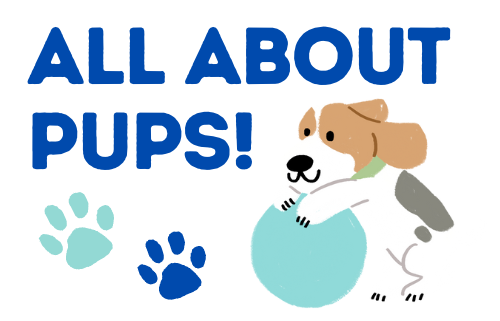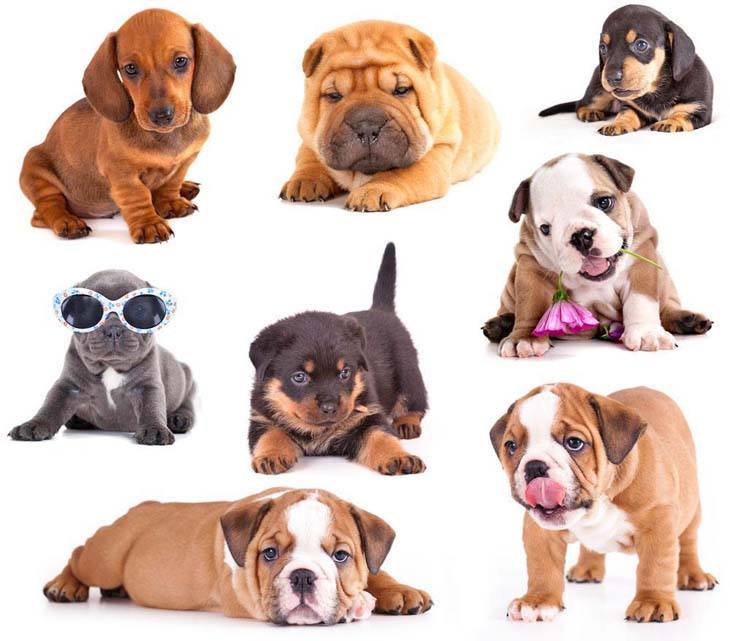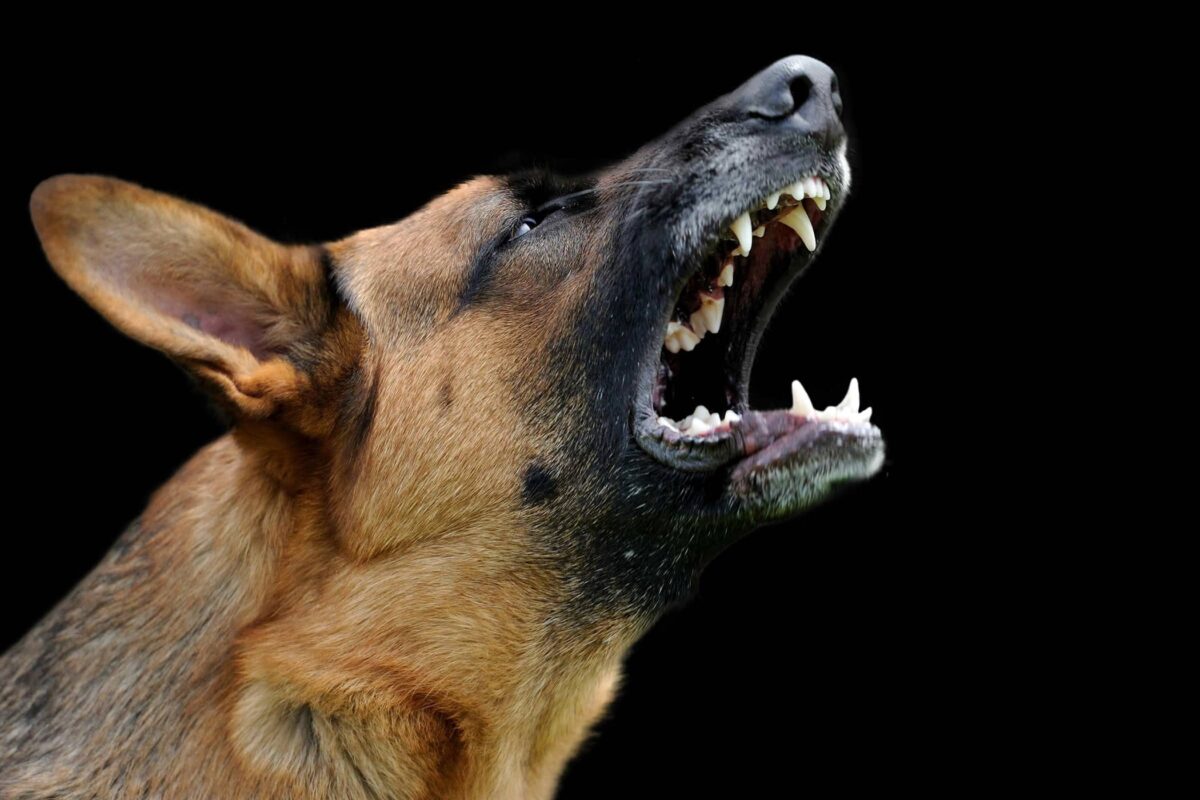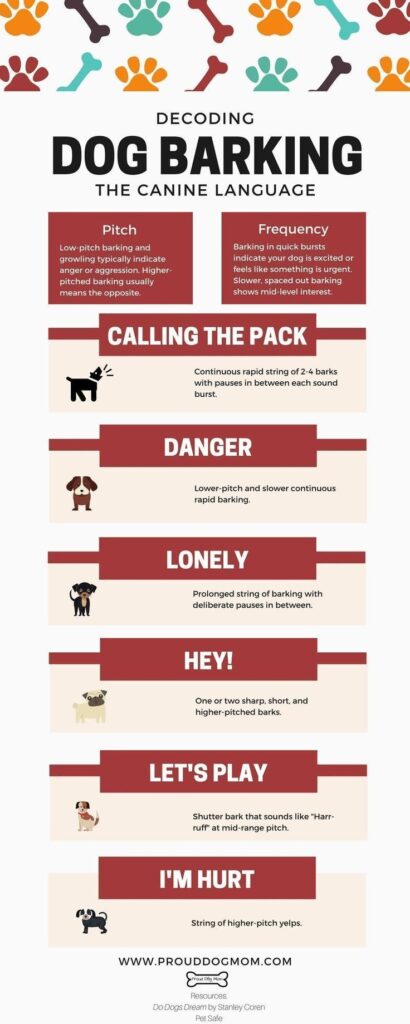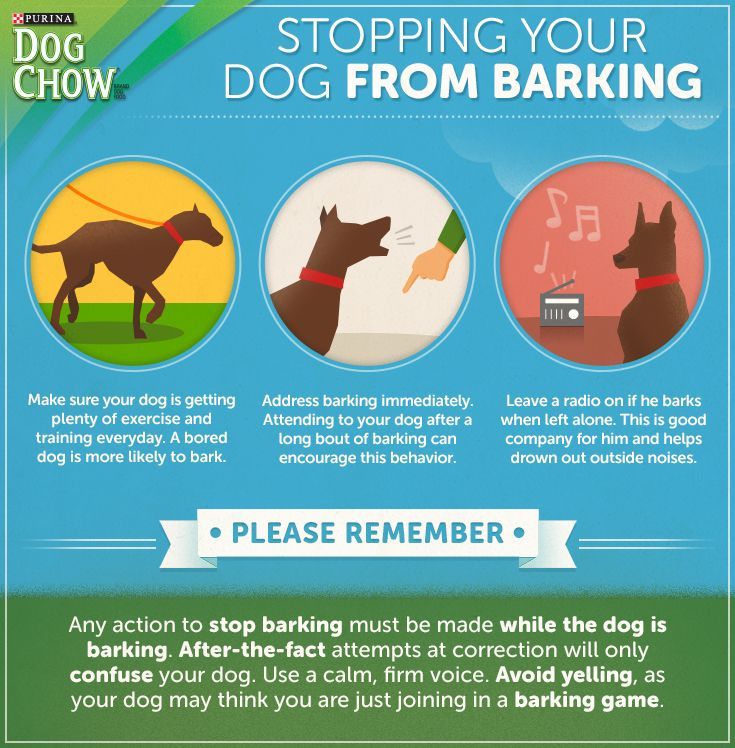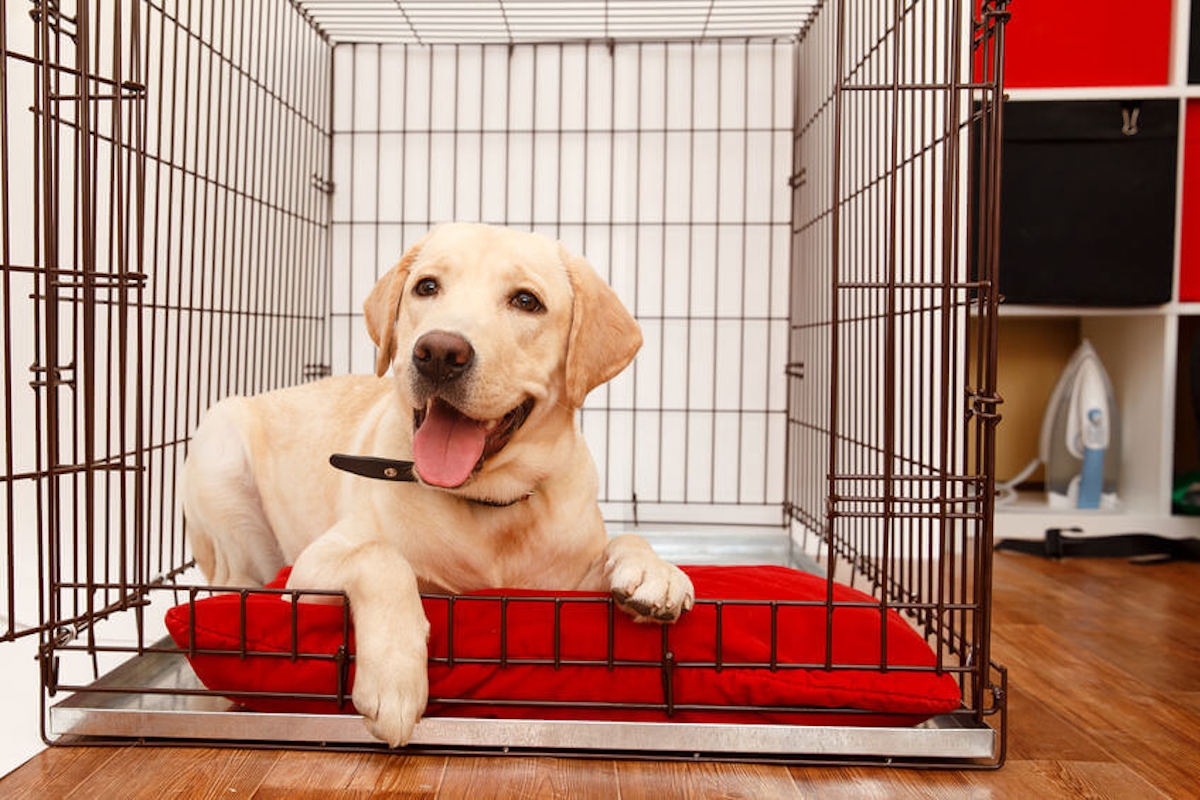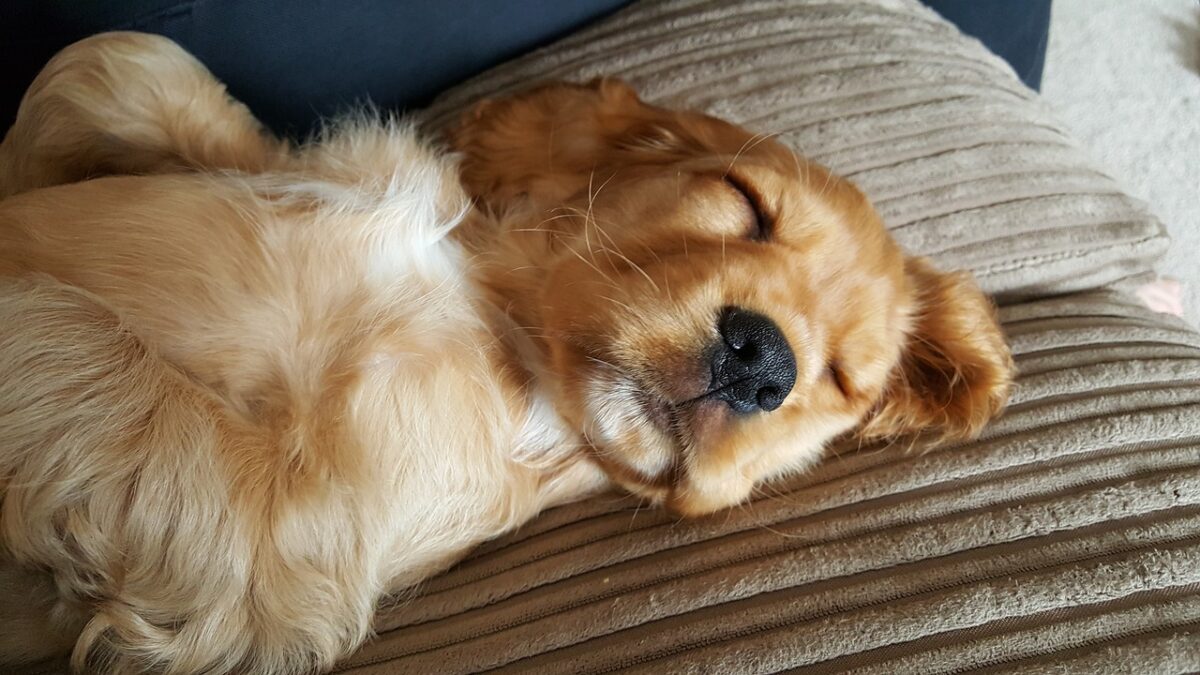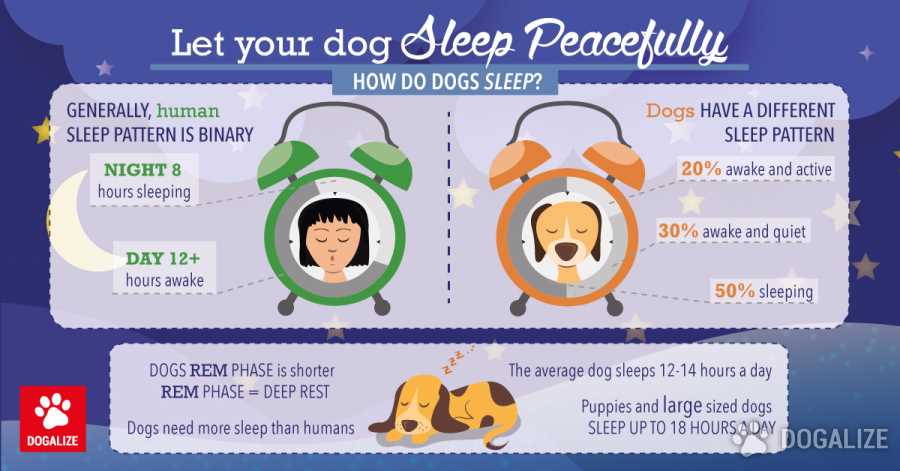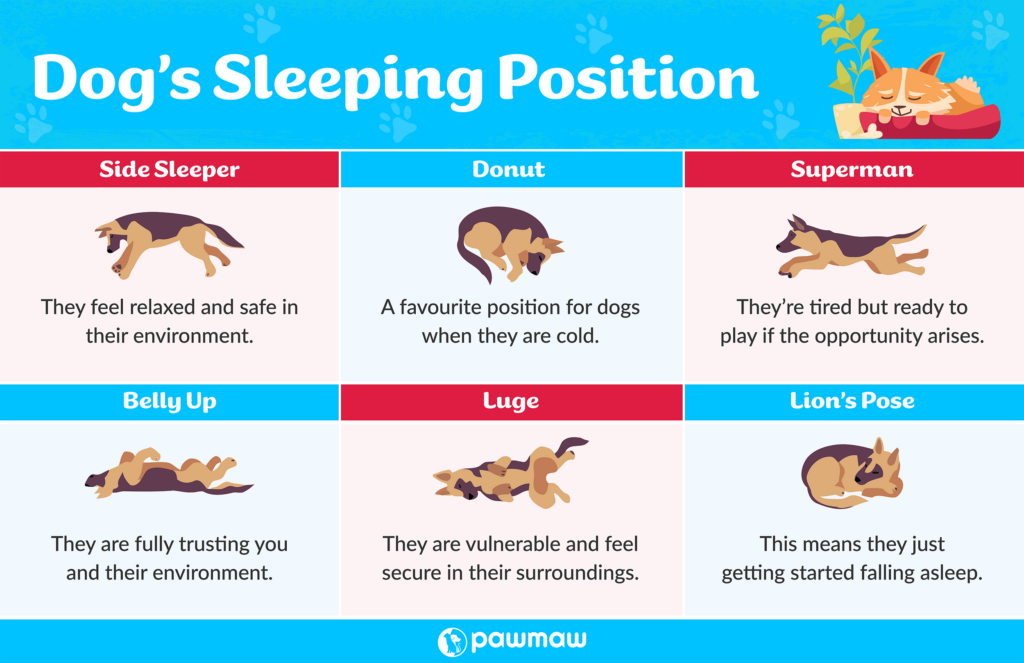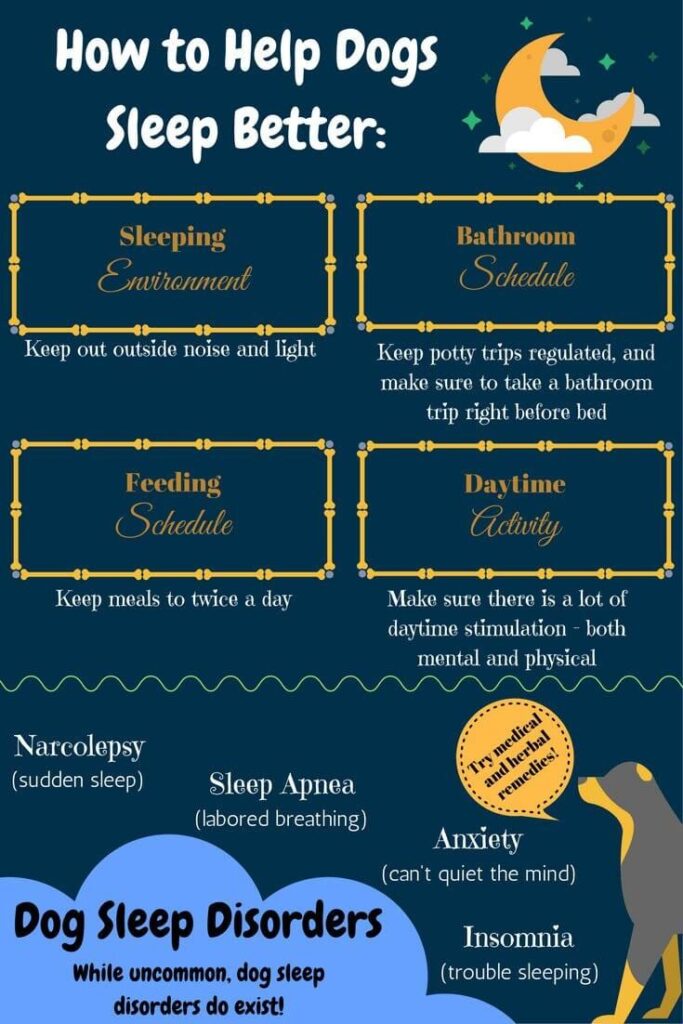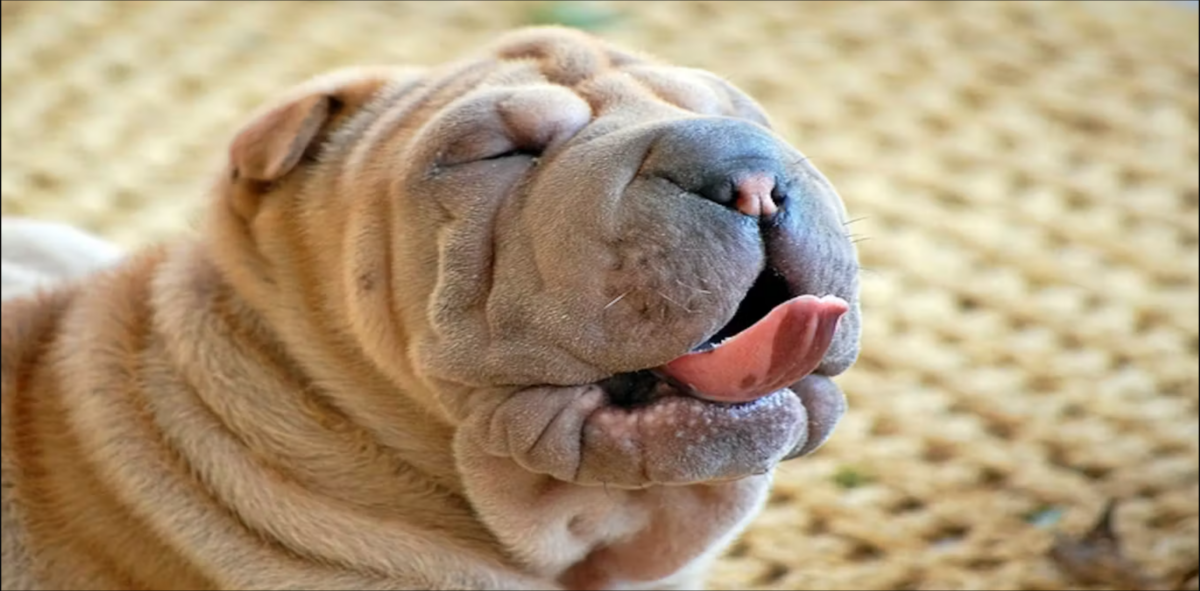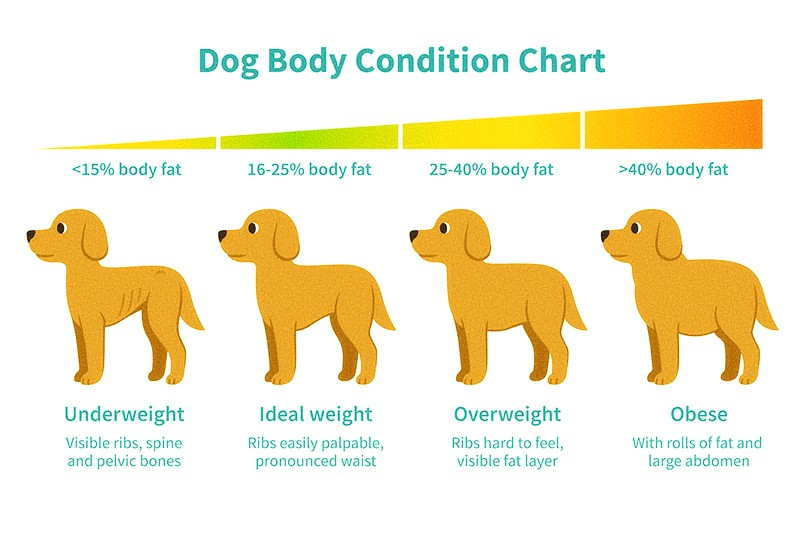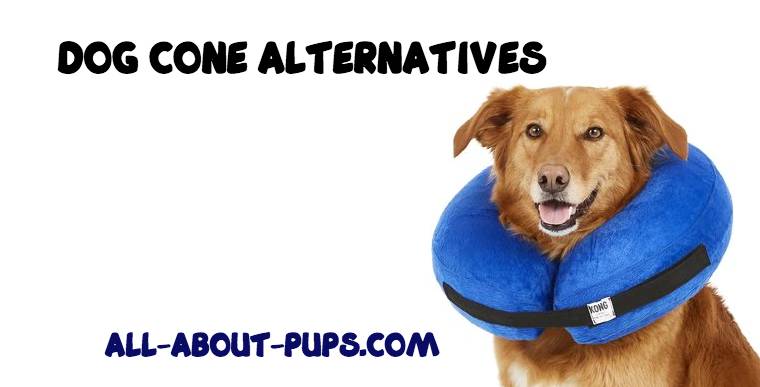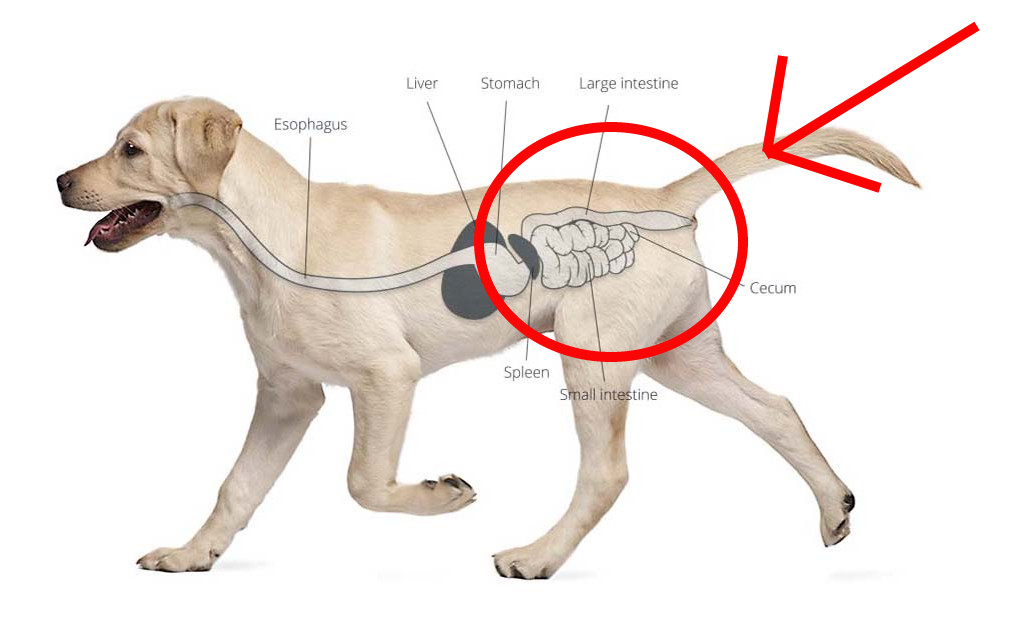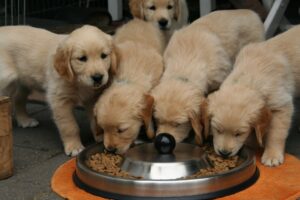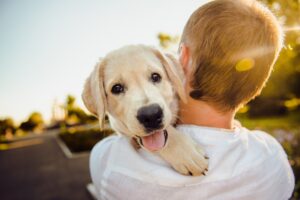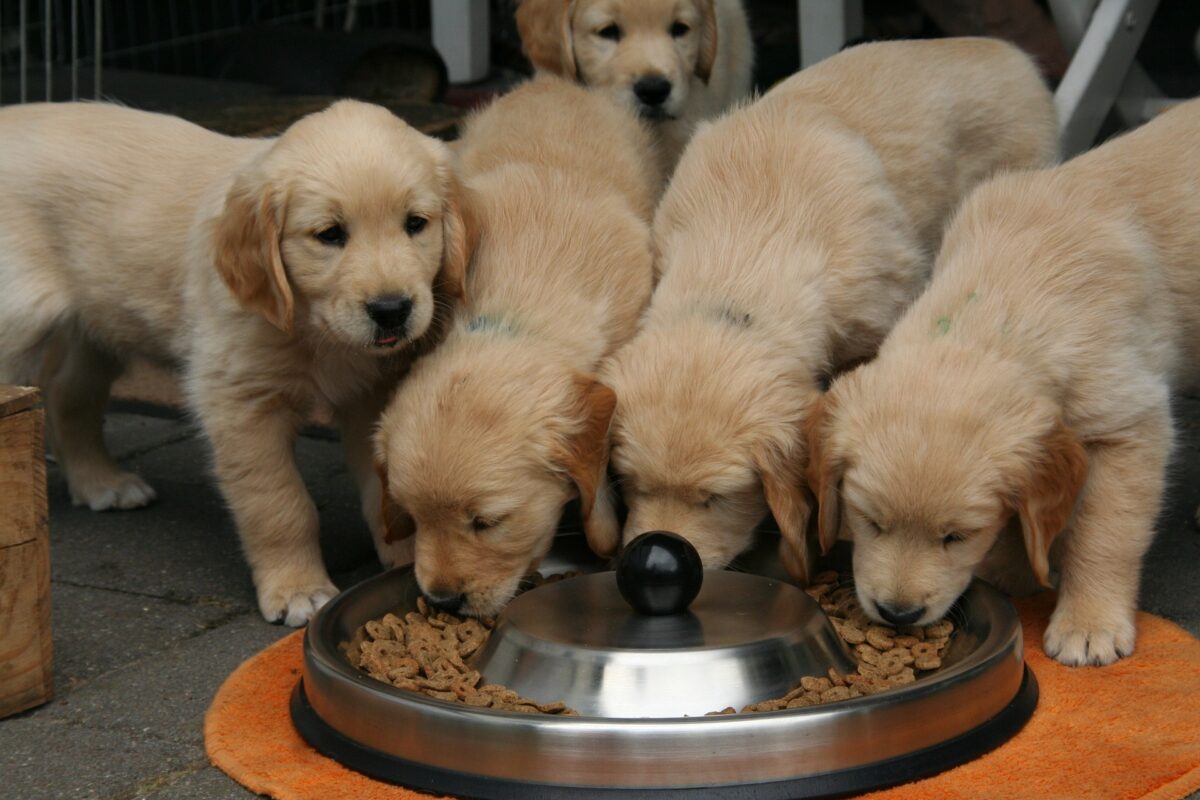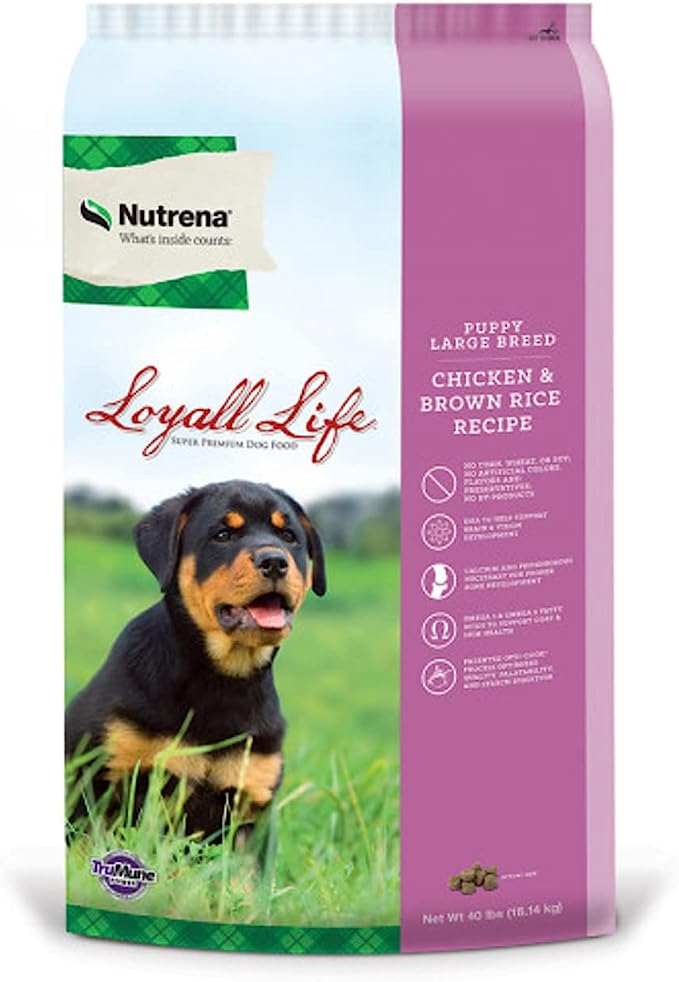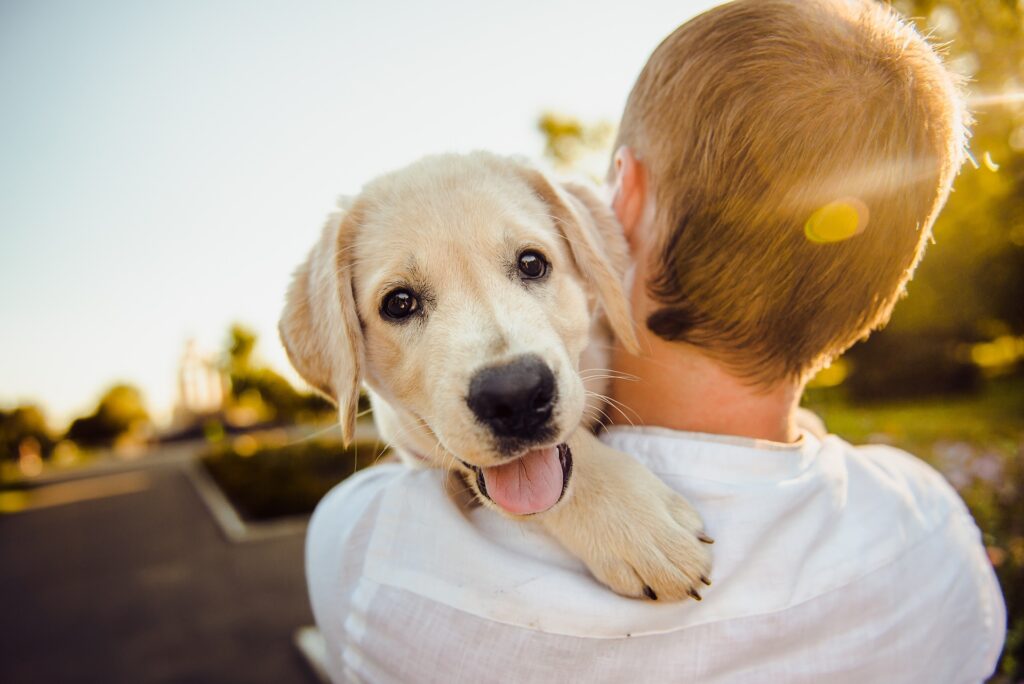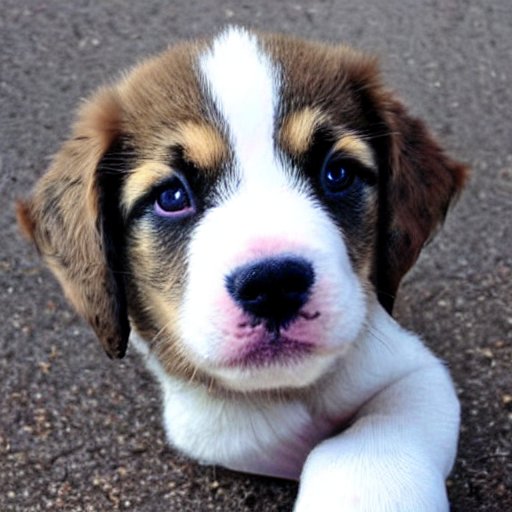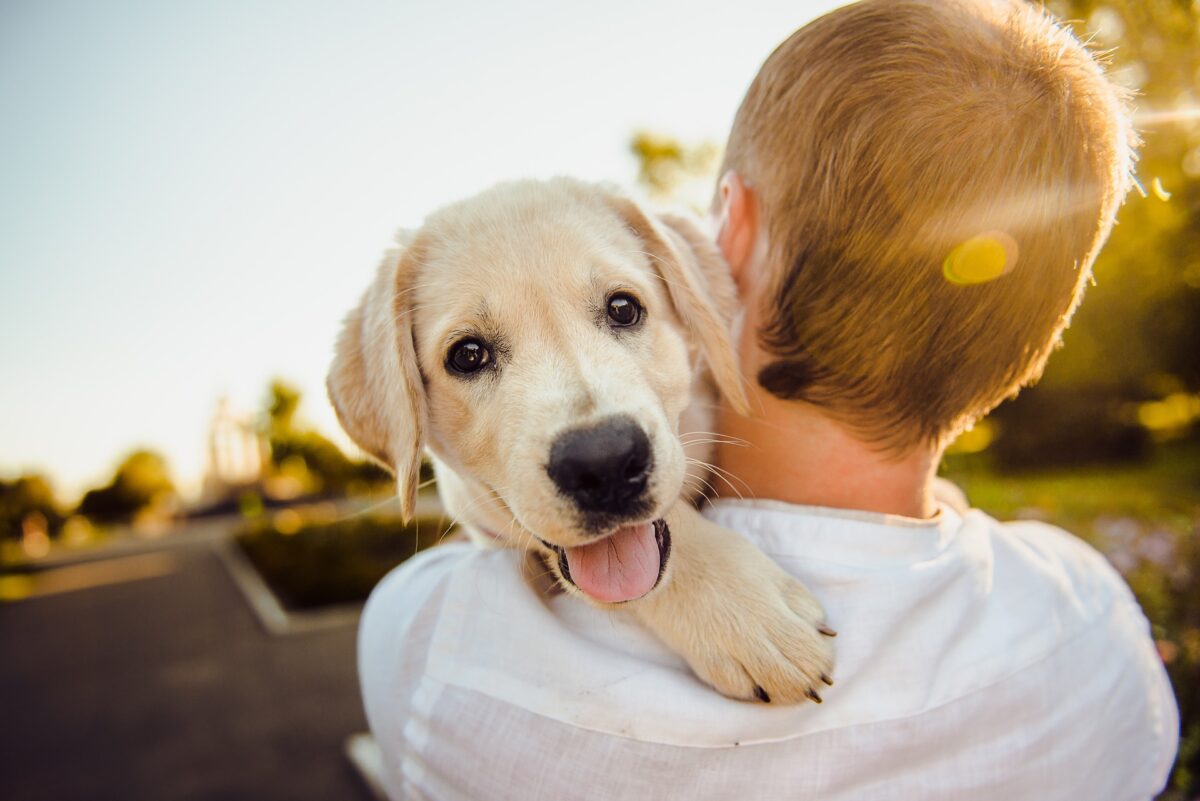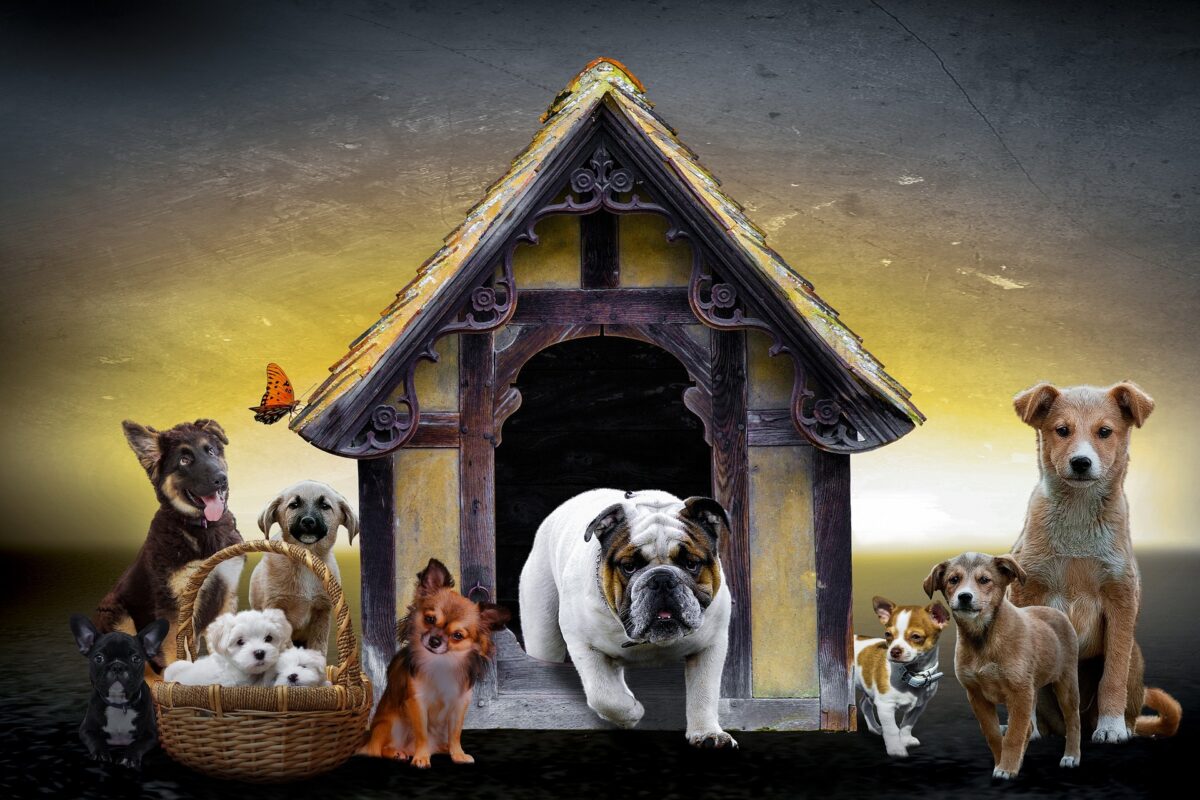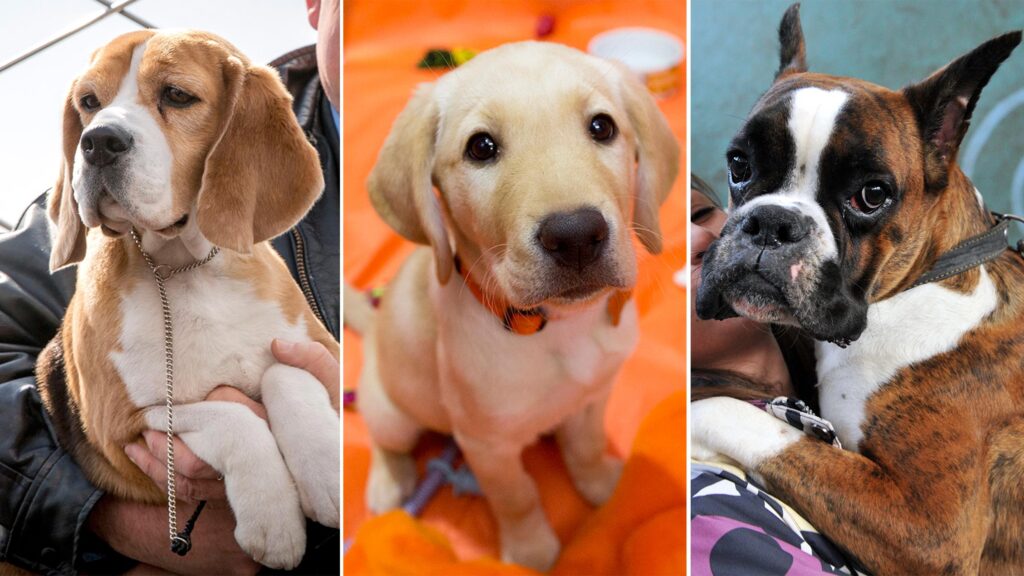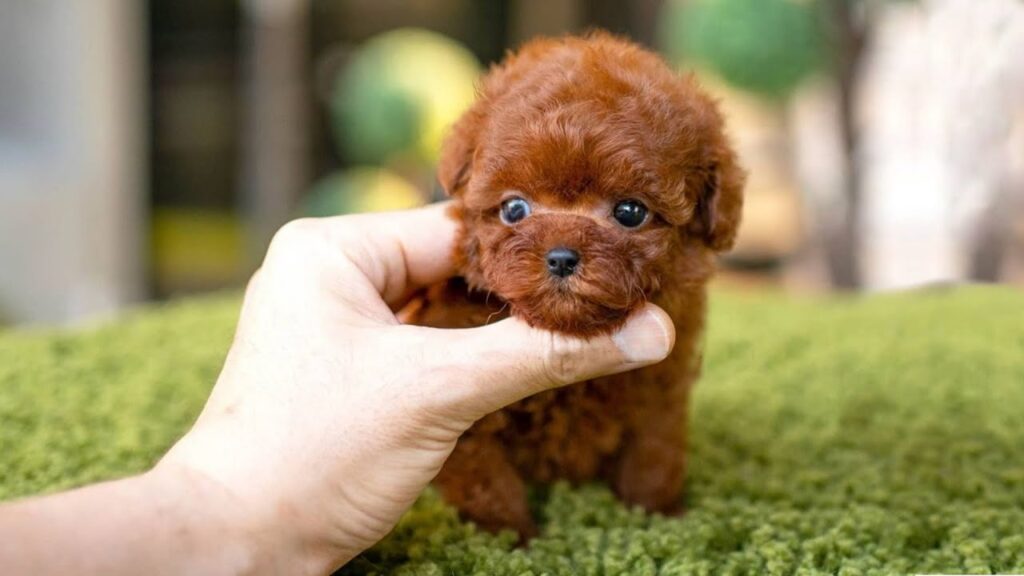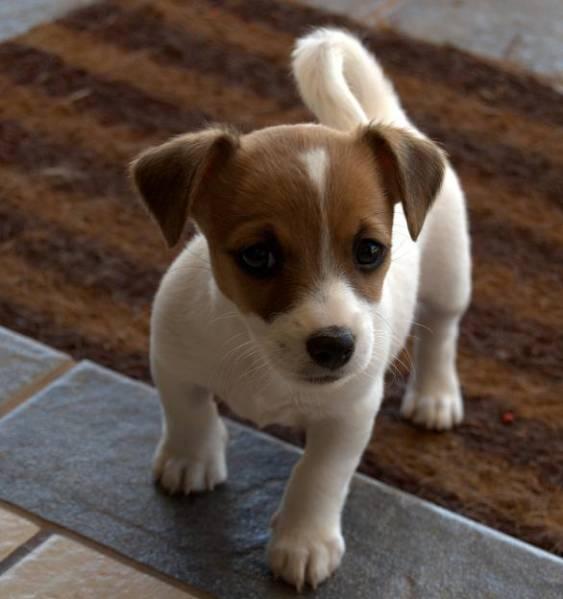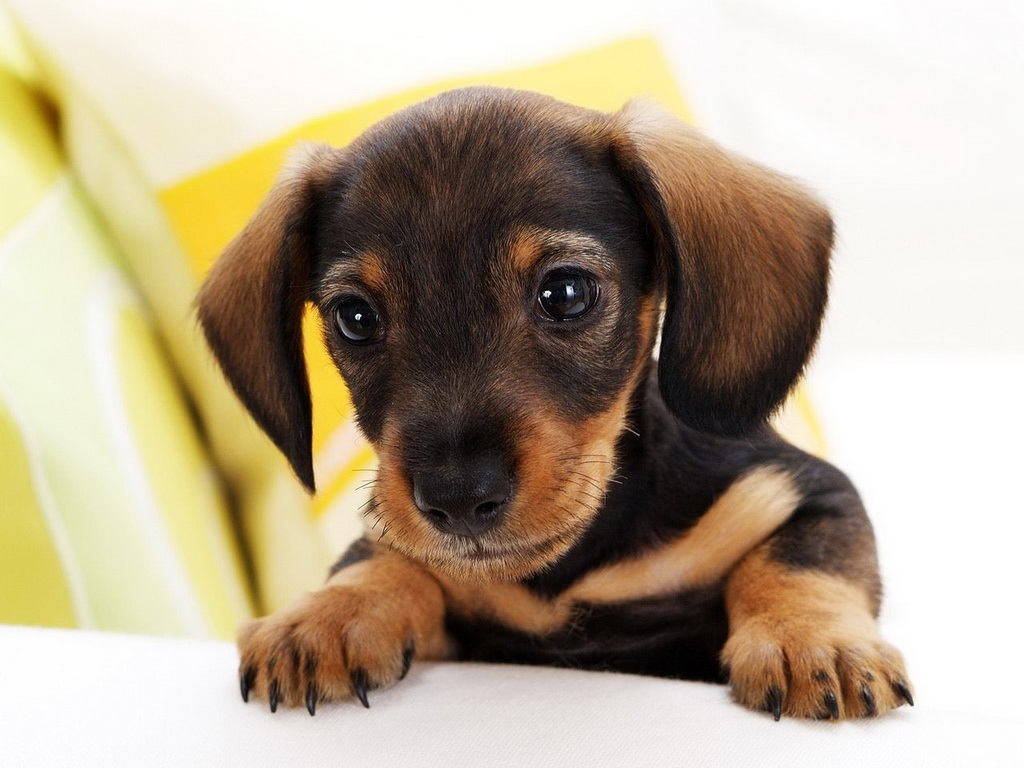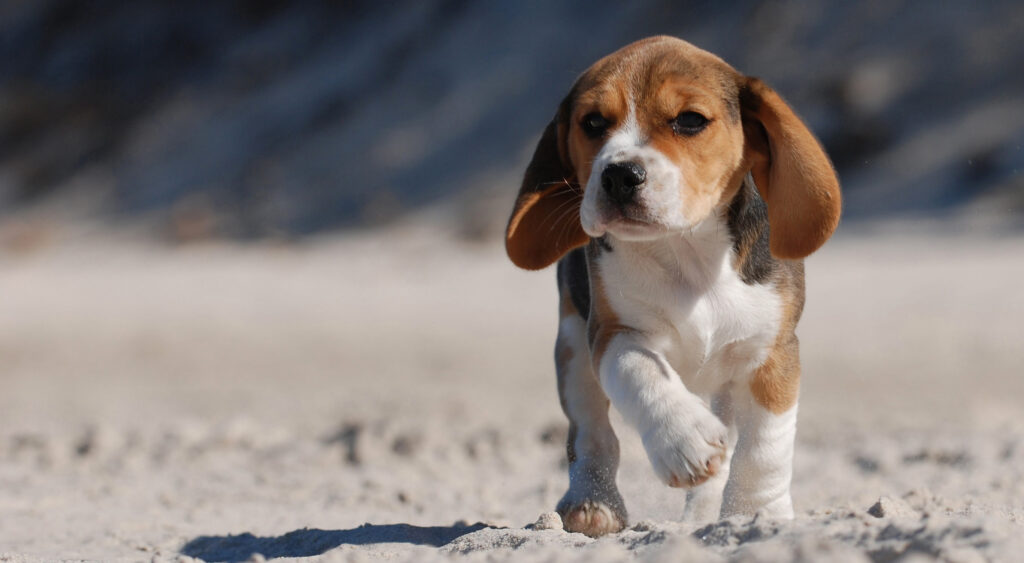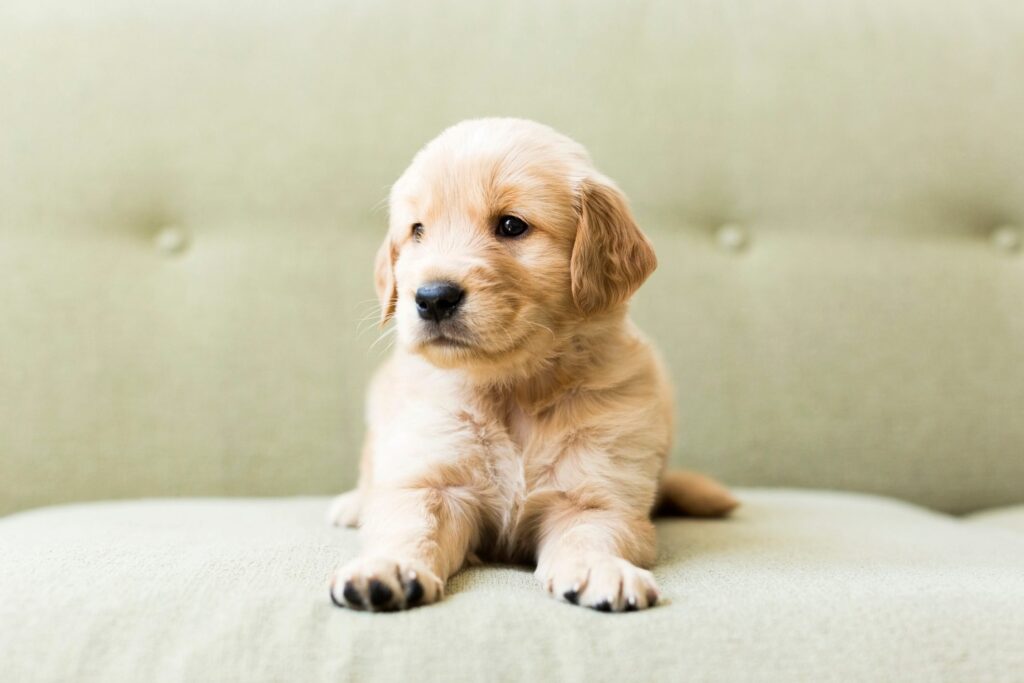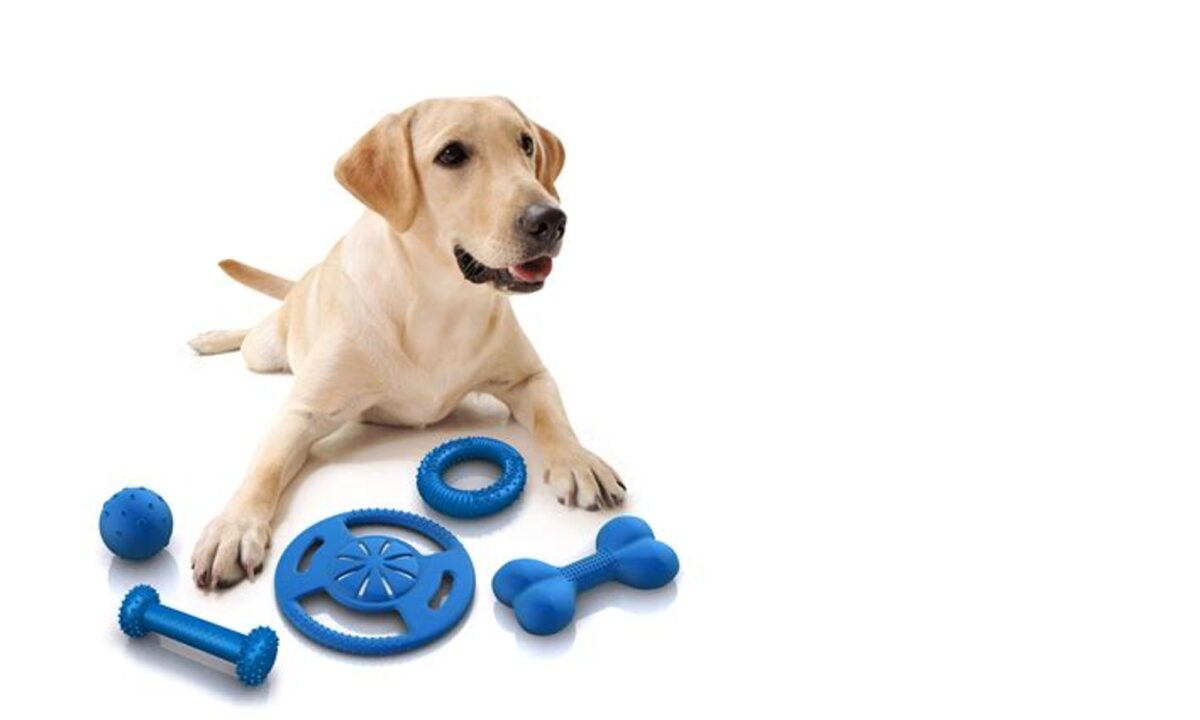More Questions About Puppies
Most Popular Questions about Puppies
The arrival of a new puppy is always an exciting time. As you prepare to welcome your furry friend into your home, it’s important to familiarize yourself with the basics of puppy care and ownership. There are many questions about puppies, and here are the most popular ones. This blog post will cover some common questions that all first-time pet owners should consider when bringing in a new pup. From understanding their diet and nutritional needs to potty training and socialization tips, this article has all the essential information you need for successful puppy parenting! We also provide links to other helpful resources so you can further explore different aspects of caring for your pup. With this guide as a reference, you’ll be ready to give your four-legged family member the best start possible.
Common FAQs About Puppies
Puppy care takes a lot of research, patience and dedication. From the moment you bring home your pup, they will need you to provide them with food, shelter, veterinary care and most importantly—love! Thankfully, there are resources like this blog post that can help ease some of the uncertainty associated with being a first-time pet owner. Here we’ll answer some of the most common FAQs about puppy ownership so you can confidently take on the role of responsible pet parent. Additionally, we’ll provide helpful tips for training your pup and establishing good habits early on in their life. With our knowledge and guidance, you’ll have everything you need to give your pup an amazing start!
See Also
- From Food to Toys: The Ultimate Guide on How to Prepare for a Dog
- Crate Training New Puppy: The BEST Guide To Success
- New Puppy Schedule: 5 BEST Rules For The Right Daily Routine
- Fetch Like A Pro: The Ultimate Guide To Teaching Your Puppy to We Fetch!
- The Best Small Dogs For Families: The ULTIMATE Guide
FAQs About Feeding Your Puppy
Will puppies eat themselves to death?
Generally speaking, puppies will not eat themselves to death. Puppies have a natural instinct when it comes to how much they should eat. They will usually stop eating when they are full and may not finish their meals if they are not hungry. In addition, puppies need regular exercise and playtime to stay healthy, so they are more likely to use up the energy they gain from their food rather than store it as fat. Therefore, it is highly unlikely that a puppy would accidentally starve itself or overeat until its stomach burst because of a lack of regulation.
However, excessive consumption of unhealthy treats can lead to obesity, which can cause health problems later in life if left unchecked. Therefore, owners should be aware of how much and what type of food they give to their furry friends in order to ensure they stay healthy. In conclusion, while puppies are unlikely to eat themselves to death, owners still need to be mindful of the amount and type of food given to them. With proper regulation and care, a puppy can stay safe and healthy for many years.
Will puppies not eat when teething?
All puppies go through a teething phase where they lose their appetite and chew on everything in sight. It’s normal, and usually lasts for only a week or two. But if your puppy doesn’t eat at all during that time, it could be a sign of something more serious.
If your puppy doesn’t start eating again after a few days, take them to the vet as soon as you can. A lack of appetite could be caused by various illnesses and conditions that need to be addressed. It’s important to make sure your puppy has regular check-ups and is getting proper nutrition for optimal health. With proper care, you can prevent any potential problems that may result in your pup eating itself to death.
Will puppies overeat?
No, puppies generally have a good sense of when they are full and will stop eating on their own. Like people, some puppies may overeat if given the chance, but this is not the norm. Anytime a puppy begins to show signs of overeating, such as weight gain or loss of appetite, it is important to take measures to adjust the pup’s diet and eating habits.
In addition to providing adequate nutrition for puppies, it is also important to make sure they receive enough exercise. Regular physical activity helps promote healthy growth and development in puppies. Exercise also provides an important outlet for pent up energy that can lead to hyperactivity or other unwanted behaviors. Taking the time to get your puppy out on daily walks or runs will help keep them physically fit and mentally stimulated.
What puppies eat?
Puppies will eat anything and everything they can get their little paws on. This usually includes trash, food off the floor, and even feces. It is important to keep your puppy away from these items and to feed them a specific puppy diet so they can grow into healthy adult dogs.
Puppies need to be able to chew on appropriate items such as bones, toys and treats in order to keep their teeth strong. If your puppy is eating inappropriate items, try switching out the item with a chew toy or something else that will satisfy its urge to chew. If you catch your puppy eating something they shouldn’t, immediately take it away and give them a treat or toy instead.
What puppies can eat?
A puppy’s diet should consist of high-quality puppy food that is specifically made for growing dogs. Puppy food usually has more protein and fat than adult dog food to help puppies grow. In addition to a good diet, puppies need plenty of fresh water and plenty of exercise. Puppies can also eat certain human foods, but it’s important to feed them a balanced diet and not give them too many treats. Some good human foods for puppies include cooked chicken, rice, pasta and yogurt.
It’s important to feed puppies at regular times. Puppies should be given meals three to four times a day until they are six months old. After that, feeding twice a day is fine. It’s also important to monitor how much food you give your puppy, as overfeeding can lead to health problems and obesity.
Can puppies have bully sticks?
Yes, puppies can eat bully sticks. Bully sticks are made of beef muscles, so they are a great source of protein for puppies. They also contain minerals and vitamins that are essential for puppy growth and development. Puppies should only eat small amounts of bully sticks, however, as they can be high in fat. Too much fat can lead to digestive problems, so it is important to monitor the amount of bully sticks your puppy consumes. It’s also important to make sure the bully stick you are giving your puppy is made from high-quality ingredients, with no artificial preservatives or additives. Bully sticks should be given as an occasional treat and not used as a meal replacement. Plus, they help keep puppies’ teeth clean!
In addition to providing protein and vitamins, bully sticks can be great for helping puppies develop good chewing habits. Chewing on bully sticks helps prevent destructive behaviors like digging or chewing furniture. The act of chewing releases endorphins which help reduce anxiety in puppies. Chewing can also help strengthen jaw muscles and promote healthy tooth development.
Overall, bully sticks can be an excellent occasional treat for puppies. Just make sure they are given in moderation and always check the ingredients to ensure they are made from high-quality, natural sources. As with any other food item, it’s best to consult with your veterinarian before introducing new treats into your puppy’s diet!
Can puppies eat watermelon?
Yes, puppies can eat watermelon. Watermelon is a good source of lycopene, beta-carotene and other vitamins and minerals that are essential for a healthy diet. It also contains a lot of water, which helps to keep puppies hydrated.
However, puppies should only eat small amounts of watermelon at first, and they should not eat the seeds or rind. The rind is difficult to digest and the seeds can be a choking hazard. If you decide to feed your pup watermelon, make sure that it is cut into small pieces and that any seeds or rind have been removed. Enjoy!
Can puppies eat carrots?
Yes, puppies can eat carrots. Carrots are a good source of vitamins A and C, which are beneficial for puppies. They also contain antioxidants, which help protect the body against damage caused by free radicals. Carrots are a low-calorie food, so they are a good choice for puppies who need to maintain a healthy weight.
However, puppies should only eat small amounts of carrots as a treat, because too much may cause gastrointestinal issues such as gas and bloating. Additionally, make sure you chop the carrot into small pieces so that your puppy can properly chew it.
Finally, always check with your vet before introducing any new food to your puppy’s diet. They will be able to provide advice about which foods are best for your pet’s age and health needs. Happy feeding!
Can puppies eat eggs?
Puppies can eat eggs but should not eat the eggshell. Eggs are a good source of protein and vitamins A and B12 for puppies. They also contain omega-3 fatty acids, which are beneficial for a dog’s skin and coat. Puppies should not eat the eggshell because it contains calcium, which can be harmful to their developing digestive system. It’s best to give puppies cooked eggs and remove any large pieces of eggshell that may remain. Eggs should also always be served cooled down, never hot or warm.
When it comes to quantity, small and toy breeds should only have a half an egg while larger breed puppies can have up to two whole eggs per day. Be sure to consult with your veterinarian before making any changes to your puppy’s diet.
Puppies need the right balance of nutrients for their growth and development, so supplementing their diet with other foods like fruits and vegetables is important too! You can offer them these in moderation – – about ¼ cup for smaller breeds and ½ cup for larger breeds per day.
Eggs are a good source of protein and vitamins A and B12 for puppies. They also contain omega-3 fatty acids, which are beneficial for a dog’s skin and coat. Be sure to consult with your veterinarian before making any changes to your puppy’s diet.
Can puppies eat apples?
Yes, puppies can eat apples. Apples are a good source of fiber, vitamin C and antioxidants, which are all important for a puppy’s growth and development.
Puppies should always be supervised when they’re eating to make sure they don’t choke on any pieces of apple. It’s also important to make sure that the apple is peeled and cored before giving it to the puppy, as the skin and seeds can be harmful if ingested.
Additionally, you should always feed the apple in small pieces to avoid choking hazards. Finally, remember to only give apples as an occasional treat and that puppies should primarily stick to their regular diet. Happy snacking!
Can puppies eat adult dog food?
Yes, puppies can eat adult dog food. Puppy food is specifically made to meet the nutritional needs of puppies, while adult dog food is made to meet the nutritional needs of adult dogs. Puppies who eat adult dog food will be getting more calories than they need, which could lead to obesity. Adult dog food also has a higher sodium content than puppy food, which can be harmful to puppies’ developing kidneys. It’s best to feed puppies a puppy-specific diet until they reach about one year old.
After that, you can transition them to an adult dog food. You should also keep an eye out for any signs of digestive problems during the transition period and consult your vet if needed. A healthy diet is essential for your pup’s growth and development, so make sure to choose a high-quality puppy or adult dog food!
That said, it’s important not to let your puppy overeat whatever type of food they eat. Monitor their portions closely and adjust as necessary if they start gaining weight. Puppies need plenty of exercise too—it helps with proper muscle development and keeps them happy and active!
Can puppies eat bananas?
Yes, puppies can eat bananas. Bananas are a good source of dietary potassium, vitamin C and dietary fiber. Puppies need plenty of potassium to help keep their muscles working properly. Vitamin C is an important antioxidant that helps keep the immune system strong. Dietary fiber helps keep the digestive system healthy. So, while it’s ok to give your pup a few bites of banana every now and again, you should make sure that bananas are not the only food they eat. Offer them some other healthy foods like cooked vegetables and lean proteins too! That way, you can be sure your furry friend is getting all the nutrients they need.
Also, it’s important to remember that puppies have a much smaller stomach than adult dogs. Because of this, you should cut up bananas into small pieces so your pup doesn’t choke on them. Additionally, you may want to avoid adding sugar or honey when giving them banana as a treat – too much sugar can be bad for their health. So, go ahead and give your four-legged friend the occasional bite of banana – just make sure it’s in moderation!
Can puppies have peanut butter?
Yes, puppies can eat peanut butter. Peanut butter is a good source of protein and fat, which are both important nutrients for puppies. Additionally, peanut butter is a good source of vitamins B6 and E, both of which are essential nutrients for puppies. Peanut butter also contains antioxidants, which can help to protect the puppy’s cells from damage.
However, it is important to note that peanut butter should only be introduced to puppies in small amounts. Too much peanut butter can lead to obesity and other health issues. It is also important to make sure that the peanut butter you give your puppy does not contain xylitol, as this sugar substitute can be toxic for dogs. When introducing peanut butter into a puppy’s diet, start off slowly with small amounts. This will help the puppy adjust and prevent any potential problems from occurring. And always remember to supervise your pup while they are enjoying their delicious snack!
What kibble do vets recommend?
The vast majority of veterinarians recommend a diet of kibble over other forms of pet food. Kibble has been specifically designed to meet the nutritional needs of dogs and cats, while other forms of pet food – such as wet food or raw food – may not have all the nutrients they need.
In addition, kibble is often fortified with important vitamins and minerals that can help keep pets healthy. Plus, it’s much easier to measure out the correct portion size of kibble than with other forms of pet food. Kibble also helps promote good dental health in pets! It can help reduce tartar buildup and keep teeth clean, unlike wet or raw foods that can stick between the teeth. All in all, kibble is a great choice for your pet’s daily meals.
However, depending on your pet’s individual needs, some vets may recommend adding wet food or other supplements to their diet. If you have any questions about what type of food is best for your pet, consult with your veterinarian for personalized advice specific to your furry friend! With proper nutrition and care, you can ensure that your pet enjoys a long and healthy life.
Is dry kibble good for puppies?
Dry kibble is not the best food for puppies because it does not have enough moisture. A diet that is high in moisture is important for puppies because it helps them to grow and develop properly. Some good options for puppy food include wet food,raw food, and homemade food.
All these food options have high levels of moisture and provide the proper nutrients for a growing pup. It is also important to make sure your puppy gets enough vitamins and minerals in their diet, so look for foods that are fortified with essential vitamins and minerals. Feeding your puppy a balanced diet will help ensure they stay healthy and happy!
It’s also important to feed your pup based on their age and size. Puppies should be fed small meals multiple times per day until about four months old when you can transition them to two larger meals per day. Always consult with your veterinarian or use an online calculator to figure out how much food your pup needs each day as this will vary depending on breed and activity level.
In addition to a nutritionally balanced diet, it is important to ensure your puppy stays hydrated. Always make sure there is fresh water available for your pup throughout the day, and take breaks on long walks to give them an opportunity to drink.
Overall, proper nutrition is essential for a growing pup. Feeding them the right foods and making sure they have plenty of water will help ensure they stay healthy and happy!
What is the number 1 healthiest puppy food?
There are many healthiest puppy foods on the market, but some of the top contenders include Holistic Select, Wellness, Eagle Pack, and Fromm. These foods are made with all natural ingredients and are devoid of fillers, by-products, and artificial additives. They also contain a balanced blend of vitamins, minerals, and antioxidants to help support your pup’s growing body and immune system. So if you’re looking for the healthiest option for your new furry friend, it’s hard to go wrong with one of these top dog foods.
Additionally, if your pup has any special dietary needs, there are plenty of specialized formulas specifically designed for those with sensitivities or allergies. Whichever food you decide to go with, make sure you read the ingredients list carefully and consult with your veterinarian if necessary. With a little bit of research and careful selection, you can be sure to find a food that will keep your pup happy and healthy for years to come!
What is the best kibble to feed your puppy?
The best kibble to feed your puppy is one that is made with high-quality ingredients and that is specifically designed for puppies. It is important to find a kibble that meets all of your puppy’s nutritional needs, as well as providing him with the right balance of protein, carbs, fat, vitamins and minerals. When choosing a kibble, also be sure to consider your puppy’s age, size and activity level.
Puppy kibble should be smaller in size and have more calories than adult dog food. It should also contain DHA for brain development and omega-3 fatty acids to help promote healthy skin and coat. Look for a brand that has added probiotics and prebiotics, as these can help support your pup’s digestive system. Avoid kibbles with high levels of artificial colors, flavors or preservatives, as these can cause stomach upset or other health issues.
Above all, be sure to read the label carefully before making any decisions about what type of kibble is best for your puppy. With so many options on the market today, you’re sure to find one that meets all of your puppy’s needs! Good luck!
Is it OK to feed dog food to a puppy?
There are a lot of opinions on whether or not it is OK to feed dog food to a puppy. Some people believe that feeding a puppy dog food will make them sick, while others believe that it is perfectly fine to do. The truth is, there are pros and cons to both feeding puppies dog food and feeding them only puppy food. Ultimately, it is up to the owner’s discretion which option they choose for their pup. Some factors they may want to consider include the age and size of the puppy, as well as the type of food they are being fed. If in doubt, always consult with a veterinarian before making any changes to a pup’s diet.
Regardless of what the decision is, it’s important to make sure the pup is receiving all their essential nutrients and vitamins in order to stay healthy. With this in mind, owners should always read labels carefully before making any decisions about what their puppy will eat. Overall, there is no one-size-fits-all approach when it comes to feeding a puppy – every pup is unique, so do your research and consult with experts if you’re uncertain. Whatever you decide, make sure that you are providing your pup with all the necessary nutrition they need as they grow up!
In addition to food options, proper exercise and playtime are also very important for puppies. Exercise helps puppies build muscle and develop coordination while also giving them an outlet for their energy. Regular playtime also helps puppies learn how to interact with people, other animals, and their environment, and can help reduce the risk of undesirable behaviors down the road. Ensuring that your puppy gets plenty of exercise will help ensure that they are on track for healthy growth and development!
Finally, it’s essential to provide puppies with love and attention as well. Be sure to spend quality time with your pup – even if just a few minutes a day – to show them you care. This will not only make them feel more secure but also help create a solid bond between you and your pup. After all, there’s nothing quite like the unconditional love between a pet parent and their fur baby!
What can I feed my 2 month old puppy?
There are a lot of things you can feed your 2-month-old puppy, but it is important to choose foods that are nutritious and age-appropriate. Puppies this age should eat mostly wet food, as it is easier to digest than dry food. You can also give them small amounts of cooked meat or eggs, raw fruits and vegetables, and whole grain bread. Be sure to avoid giving your puppy anything that is salty, fatty, or sugary, as those foods can be harmful to their developing digestive system.
You can also give them small amounts of puppy-specific treats, as long as they are nutritionally balanced. Finally, always make sure your puppy has access to plenty of fresh, clean water throughout the day. With the right nutrition and plenty of love and attention, you can help your pup grow up healthy and happy!
As your puppy grows older, you may decide to switch their diet from wet food to dry kibble or a combination of both. When switching foods, it is important to do so gradually over a period of 7–10 days in order to avoid upsetting their digestive system. Additionally, look for premium quality dog foods that are specially formulated for puppies and contain all the necessary vitamins and minerals they need at this age.
Following these simple tips can help keep your puppy healthy and thriving.
Another important part of your puppy’s diet is supplements. Most puppies will benefit from a daily multivitamin or probiotic supplement to boost their immune system and help promote overall health. You should also talk with your vet about any other nutritional needs your pup may have, such as fatty acids for skin and coat health or joint support for active pups. Taking the time to ensure that your puppy is getting all the nutrition they need can pay off in the long run!
Finally, never forget the importance of providing plenty of exercise, socialization, and mental stimulation for your pup. Exercise helps keep their bodies strong and prevents boredom-related behaviors like destructive chewing or excessive barking. Socializing them with other people and animals is also important for their emotional development, while mental stimulation can be achieved through games like hide-and-seek or puzzles. With the right combination of nutrition, exercise, and loving care, you can help provide your pup with a happy and healthy start to life!
What food can puppy dogs eat?
Puppy dogs can eat dog food, and they can also eat human food. Some good human foods for puppies are chicken, raw beef, and boiled eggs. Puppy dogs should not eat chocolate, onions, or grapes.
Puppies should not eat food that is much bigger than their mouths either. It’s important to make sure your puppy gets enough exercise and plenty of fresh air, too! Regular walks, running around in a fenced-in yard, and playing with other puppies are all great ways to keep your pup fit and healthy. Happy puppy parents make happy puppies!
If you have a puppy dog, it’s always a good idea to take them to the vet for regular checkups. The vet can help assess your pup’s overall health and provide advice on diet and nutrition. Puppy dogs need vaccinations and deworming treatments as well. Keeping up with annual checkups can help ensure your pup stays healthy and happy throughout its life.
What are the healthiest foods for puppies?
The best diet for puppies is one that is based on a variety of fresh, whole foods. Some good choices include lean meat, fish, eggs, vegetables and fruit. Puppies also need plenty of fresh water and should be given food two or three times per day. It’s important to avoid giving puppies unhealthy snacks like table scraps, which can lead to problems like obesity and tooth decay.
Puppies should also avoid treats that contain artificial colors, flavors or preservatives. When it comes to exercise, puppies need a lot of activity and attention. Taking them out on walks and providing toys for playtime will help keep them healthy and happy. Finally, make sure to provide routine veterinary care so your puppy can stay in tip-top shape!
What is the best puppy food right now?
There are a lot of great puppy foods on the market these days. The best food for your new pup will depend on their individual nutritional needs, as well as their age, breed and activity level.
It’s important to do your research and find a food that will meet all of your pup’s nutritional requirements. You also want to make sure that the food is made from high-quality ingredients and doesn’t contain any harmful additives or chemicals.
Once you’ve found a food that meets all of your pup’s needs, be sure to transition them slowly onto the new food so they can adjust. With the right food and care, your pup will grow up to be happy and healthy!
Which food is best for dog puppy?
As puppies grow and develop, their dietary needs will also change. A good food for a young puppy is one that has been specifically designed for his age and weight. It should have enough protein to help him grow, as well as the right balance of other nutrients to support healthy development. Puppy food is available at most pet stores, or from your veterinarian. Be sure to follow the feeding instructions on the package, and consult with your vet if you have any questions about your pup’s diet.
When your pup is older, around 6-12 months of age, they may require a different type of food. This is because their nutritional needs will have changed since they were puppies. Adult dog foods are designed to meet the energy and nutrient requirements of an adult canine. Look for a formula that lists real meats like beef or chicken as the main ingredients. It should also contain plenty of vitamins and minerals, as well as other important nutrients such as omega fatty acids and probiotics to keep your pooch healthy and happy.
No matter what age your doggo is, make sure he’s getting enough – but not too much – exercise each day. Puppies should get at least two 20-minute sessions of play each day, and adult dogs should get at least an hour of activity each day. This helps to keep their bodies healthy, as well as providing mental stimulation that can help prevent boredom and destructive behaviors.
Remember that your pup’s dietary needs will change over time, so make sure you’re always consulting with your veterinarian to keep him in the best possible shape! With the right food and exercise, you’ll have a happy and healthy dog for many years to come.
Do puppies need wet food?
Puppies do not need to eat wet food; they can eat dry food. However, some puppies may prefer wet food because it has a higher water content than dry food. Wet food is also easier to chew and can help clean the puppy’s teeth.
When it comes to treats, you should always provide healthy snacks like carrots and apples instead of sugary treats. Make sure to feed your puppy in moderation so that he or she doesn’t become overweight.
Lastly, it is important to provide plenty of fresh water for your puppy; this will help keep him or her hydrated and happy. Always make sure that the water is clean and change it regularly.
Following these tips can help ensure that your new pup has a long and healthy life!
What should I feed my 8 week old puppy?
Your 8-week-old puppy requires 3 meals per day. Feed him a high-quality puppy food that has been approved by the American Kennel Club (AKC). Divide the recommended portion of food into three equal parts and feed your pup one part in the morning, another at midday, and the last one in the evening. Always have fresh, clean water available for your pup to drink.
Puppyhood is a time of growth and development, so make sure you are providing him with the nutrients he needs to grow up healthy and strong. Consult with your veterinarian if you have any questions about what to feed your puppy.
What food should I feed my puppy?
There are a number of different foods that you can feed your puppy, but it is important to choose the right food for his age and size. Puppies should eat a diet that is high in protein and low in carbohydrates. You can buy puppy food at most pet stores, or you can mix regular dog food with canned puppy food. Make sure to give your puppy plenty of fresh water to drink, and don’t give him anything chocolate or caffeinated, which can be harmful to dogs.
You can also give your puppy treats, but make sure to feed them in moderation. Giving your puppy too many treats can lead to obesity and other health problems. Finally, it’s important for puppies to get plenty of exercise. Take him for regular walks or let him run around in a fenced yard to keep his muscles strong and help him stay active. Having an exercise routine will also help discourage bad behaviors like digging and chewing on furniture.
With the right food and exercise, you can ensure that your puppy grows into a healthy adult dog!
What foods should my puppy avoid?
Some people believe that feeding a puppy adult dog food can stunt its growth, leading to a number of health problems. Puppy food is specifically designed to meet the nutritional needs of puppies. It has more calories, protein, and calcium than adult dog food. It also has lower levels of sodium and fat.
Generally speaking, you should avoid feeding your puppy the following foods:
- Chocolate
- Onions
- Grapes
- Raisins
- Macadamia Nuts
- Caffeine
These foods can be toxic to puppies and can cause severe gastrointestinal upset or worse. It’s important to remember that puppies have different nutritional needs than adult dogs, so it’s best to stick with puppy food. It might seem expensive, but it’s worth it in the long run for your pup’s health!
Additionally, puppies should always have access to plenty of clean drinking water every day. Depending on their age and activity level, they may need more water than adults cats and dogs. Puppy food usually contains more moisture than adult dog food, so that helps provide hydration as well. If your pup isn’t getting enough fluids through their diet, you may need to supplement them with additional water each day to keep them healthy and hydrated.
Finally, it’s important to know how much and how often to feed your puppy. Puppies need to eat more frequently than adult dogs, usually about three or four meals a day for young puppies and two meals a day for older puppies. Make sure you follow the directions on the package when determining the appropriate amount of food for your pup’s size and age. This can help avoid overfeeding or underfeeding, both of which can lead to health problems.
If you have any questions or concerns about feeding your pup, consult with your veterinarian for personalized advice and guidance.
More FAQs about Feeding Your Puppy
FAQs About Puppy Grooming
What is the best dog brush for Labradors?
Labradors are the most popular type of dog in America. People love them because they are always happy and enjoy life. Even though they have short fur, this does not mean that you don’t have to groom them. Grooming a Labrador is very important because it keeps them healthy and makes them stay happy.
Labradors have a double-layer coat that helps them stay warm and protects them from the elements. Labradors may not be the most popular breed when it comes to grooming, but they do require some special care twice a year. This is when they blow their coats and lose a lot of hair. In order to avoid making too much of a mess, you will need to brush them regularly using the right type of brush. Here are our top picks for the best brush for your Lab.
What is the best brush for Poodles?
The Poodle is a popular breed that is beloved for its hypoallergenic qualities and minimal shedding. However, this doesn’t mean they don’t need regular brushing. In fact, regular brushing is very important for Poodles!
Here are some great brushes for your Poodle’s hair:
More FAQs about Puppy Grooming
FAQs About Puppy Vaccines and Shots
How Many Vaccines Do Puppies Get?
Puppies need shots to keep them safe from dangerous diseases. They will usually get two sets of shots with boosters every three to four weeks until they are 16 weeks old. Then they will get vaccines once a year or whatever your vet suggests.
The core canine vaccines that every puppy should receive include distemper, hepatitis, parvovirus, parainfluenza virus (sometimes called Bordetella), rabies, and leptospirosis. Depending on their lifestyle and the region in which you live, your vet may recommend additional non-core vaccines such as canine influenza virus (H3N2) or Lyme disease. In some areas, it’s also important to vaccinate against canine infectious tracheobronchitis (or kennel cough) and coronavirus.
It is important to give your puppy the right vaccinations so they stay healthy. These shots will help protect them from getting sick. Give your puppy their vaccines one at a time. Wait several weeks between each shot so their body can respond to the vaccine properly. Talk to your vet about what shots your puppy needs and when they need them. These shots will help keep your puppy safe from dangerous diseases.
Where do puppies get vaccinated?
Puppies get vaccinated at the veterinarian’s office. They receive a series of shots to help protect them from diseases like rabies, hepatitis, distemper and parvo. Vaccinations are an important part of responsible puppy care, and should be started as soon as the pup is old enough.
Puppies should also be spayed or neutered to prevent unwanted litters. Regular veterinary check-ups are necessary for puppies to stay healthy and happy. During these visits, your vet will administer any necessary vaccines, give general health advice and discuss diet and exercise needs. They may also offer tips on proper puppy socialization, obedience training and housebreaking. Taking good care of your pup from a young age can help ensure that you have many years of companionship with them.
Where do puppies get worms from?
Puppies can get roundworms, hookworms, and whipworms from their mother’s milk. They can also get them from eating infected soil, feces, or other animals. Puppies should be dewormed regularly to protect them from these parasites.
Vaccinations are also important for puppies, as they help protect them from dangerous diseases such as distemper, parvovirus, and rabies. A puppy’s first set of vaccinations should start at 8 weeks old and then repeated every 3-4 weeks until they reach 16 weeks of age. After that, they will need annual boosters to keep them protected against these illnesses. Additionally, puppies should be spayed or neutered when they’re between 6-9 months old to avoid unwanted litters and potential health problems associated with not spaying or neutering.
Finally, providing a healthy diet is essential for puppies to grow into strong adult dogs. Puppy food is formulated specifically for the nutritional needs of growing pups – it has higher levels of fat, protein, and other nutrients to support healthy development.
Feeding your puppy the right amount of food is also important; puppies need several small meals throughout the day rather than one or two large ones. This will help their bodies better absorb the nutrients in their food and help them stay at a healthy weight as they grow. As your puppy gets older, you can transition them from puppy to adult food and reduce the number of meals per day.
Overall, proper care for puppies includes regular deworming, vaccinations, spaying/neutering when appropriate, and a balanced diet tailored to their specific needs. With these steps in place, you can give your pup the best start in life and enjoy many years together.
Where do puppies get parvo?
Parvo is a highly contagious virus that affects puppies and dogs. The virus is found in the feces and saliva of infected animals and can be spread through contact with contaminated surfaces, water or food, or from other animals. Parvo typically affects young puppies between 6 weeks and 6 months old, but any dog can get it. Symptoms include vomiting, diarrhea, loss of appetite, fever and weight loss. Parvo can be deadly if not treated, but there is a vaccine available to help protect your puppy from this serious virus.
It’s important to get your puppy vaccinated against parvo and to keep him up-to-date on all of his vaccinations. Additionally, it’s important to practice good hygiene when handling other animals or their waste products in order to decrease the chances of transmitting the virus from one animal to another. If you notice any signs of Parvo in your puppy, be sure to contact your veterinarian for help immediately. Treatment for parvo can include supportive care such as fluids, antibiotics, and antiemetics.
With prompt treatment, many puppies can recover fully from this devastating virus. In conclusion, Parvo is a serious virus that requires immediate medical attention if detected in your pup. Vaccinating your pet is the best way to prevent Parvo and to protect him from this life-threatening disease. By practicing good hygiene and getting your puppy vaccinated, you can help keep your pet safe and healthy. But if you do suspect that your puppy has Parvo, it’s important to seek medical attention right away.
Where do puppies get shots?
Puppies get their vaccinations starting at six to eight weeks old. They’ll need a series of shots to protect them from diseases like distemper, hepatitis, leptospirosis, parainfluenza, and rabies. Most vets recommend getting the final round of puppy shots when the dog is about 16 weeks old. After that, the vet may suggest boosters every one to three years depending on the individual dog’s needs. It’s also important to keep up with annual checkups so your pup stays healthy throughout his life. Keeping up with vaccinations and regular visits can help ensure a long and happy life for your furry friend.
Additionally, many pet owners choose to get their dogs microchipped or enrolled in pet insurance plans as extra safety nets should an emergency arise. Regardless of which options you choose, it’s important to do what’s best for your pup when it comes to health care!
Where puppies get parvo?
Puppies can get parvo from their mothers, other dogs, or even the environment. Infected puppies often exhibit bloody diarrhea and vomiting. In severe cases, dehydration and death can occur. Treatment typically includes fluids, antibiotics and sometimes surgery. Puppy owners should vaccinate their pets to help protect them from this deadly virus. Parvo is highly contagious so it is important to take precautions when around puppies, including washing your hands thoroughly after contact.
Additionally, it is important to avoid walking your pet in areas where other dogs may have been or keep them away from unfamiliar animals. If you think your puppy has contracted parvo, contact your veterinarian immediately for treatment. Early diagnosis and treatment can help to improve the chances of recovery and reduce the severity of symptoms. Taking these precautions can go a long way in helping to protect puppies from this deadly virus.
When puppies need shots?
Puppies need their first round of vaccinations at 6-8 weeks old, and then should continue to get boosters annually. Rabies shots are required by law in most states, so be sure to check with your veterinarian about the necessary vaccines for your area.
It’s important to keep your pup up-to-date on vaccinations, to ensure their health and safety.
Additionally, puppies should be dewormed several times in the first few months of life. Even if your puppy appears healthy, worms can still be present in their system. This is why regular deworming is recommended until they are at least 6 months old. Speak with your veterinarian about the best deworming protocol for your pet’s needs.
Finally, it’s important to schedule regular checkups with a licensed veterinarian throughout the life of your puppy. Your vet will be able to provide necessary preventive care such as flea and tick treatments, as well as detect any underlying issues that could arise over time. These checkups are key to keeping your puppy healthy, so be sure to make them a priority.
How do puppies get parvo?
Puppies get parvo by coming into contact with the virus, which can be found in feces and other contaminated areas. The virus can also live on surfaces for long periods of time, so it’s important to clean any areas a puppy may have come into contact with if you think he may have been exposed to parvo. You can also help prevent your puppy from getting parvo by vaccinating him against it and keeping him away from other sick dogs.
Be aware that parvo can be highly contagious, so it’s important to keep your puppy away from any other dogs or cats who may be carriers of the virus. If you think your puppy has been exposed to parvo, take him to the vet right away—early diagnosis and treatment can help prevent serious illness and even death. Parvo is a serious virus, but with proper care and prevention it can be stopped in its tracks. Take steps to protect your pup and make sure he stays healthy for years to come.
More FAQs about Puppy Vaccines and Shots
FAQs About Labrador Retrievers
What is the best dog brush for Labradors?
Labradors are the most popular type of dog in America. People love them because they are always happy and enjoy life. Even though they have short fur, this does not mean that you don’t have to groom them. Grooming a Labrador is very important because it keeps them healthy and makes them stay happy.
Labradors have a double-layer coat that helps them stay warm and protects them from the elements. Labradors may not be the most popular breed when it comes to grooming, but they do require some special care twice a year. This is when they blow their coats and lose a lot of hair. In order to avoid making too much of a mess, you will need to brush them regularly using the right type of brush. Here are our top picks for the best brush for your Lab.
More FAQs about Labrador Retrievers
FAQs About Puppy Breeds
What is the best dog brush for Labradors?
Labradors are the most popular type of dog in America. People love them because they are always happy and enjoy life. Even though they have short fur, this does not mean that you don’t have to groom them. Grooming a Labrador is very important because it keeps them healthy and makes them stay happy.
Labradors have a double-layer coat that helps them stay warm and protects them from the elements. Labradors may not be the most popular breed when it comes to grooming, but they do require some special care twice a year. This is when they blow their coats and lose a lot of hair. In order to avoid making too much of a mess, you will need to brush them regularly using the right type of brush. Here are our top picks for the best brush for your Lab.
FAQs About Buying A Puppy
More FAQs about Buying a Puppy
FAQs About Raising a Puppy
Will puppies eyes stay blue?
Many people have wondered if the eyes of a puppy will stay blue.
The answer to this question is yes, but there are a few exceptions.
Some puppies’ eyes may change color as they age, while others will keep their blue hue for the entirety of their lives.
There is no one definitive answer to this question since it varies from dog to dog. Some puppies’ eyes may change color as they age, while others will keep their blue hue for the entirety of their lives.
Will puppies eat themselves to death?
Generally speaking, puppies will not eat themselves to death. Puppies have a natural instinct when it comes to how much they should eat. They will usually stop eating when they are full and may not finish their meals if they are not hungry. In addition, puppies need regular exercise and playtime to stay healthy, so they are more likely to use up the energy they gain from their food rather than store it as fat. Therefore, it is highly unlikely that a puppy would accidentally starve itself or overeat until its stomach burst because of a lack of regulation.
However, excessive consumption of unhealthy treats can lead to obesity, which can cause health problems later in life if left unchecked. Therefore, owners should be aware of how much and what type of food they give to their furry friends in order to ensure they stay healthy. In conclusion, while puppies are unlikely to eat themselves to death, owners still need to be mindful of the amount and type of food given to them. With proper regulation and care, a puppy can stay safe and healthy for many years.
Will puppies not eat when teething?
All puppies go through a teething phase where they lose their appetite and chew on everything in sight. It’s normal, and usually lasts for only a week or two. But if your puppy doesn’t eat at all during that time, it could be a sign of something more serious.
If your puppy doesn’t start eating again after a few days, take them to the vet as soon as you can. A lack of appetite could be caused by various illnesses and conditions that need to be addressed. It’s important to make sure your puppy has regular check-ups and is getting proper nutrition for optimal health. With proper care, you can prevent any potential problems that may result in your pup eating itself to death.
Will puppies stop biting?
Many people worry that puppies will never stop biting. But this isn’t the case! With proper training, puppies can be taught to inhibit their bite and only use their mouths for playing and interacting with humans in a friendly way.It’s natural for puppies to bite. They’re teething and exploring their new world with their mouths. But that doesn’t mean you have to put up with it! There are ways to get puppies to stop biting that don’t involve punishment or harsh methods. Here are some tips to try:
- Redirect their attention – When you notice your puppy biting, give them a chew toy or another object to redirect their attention away from your skin.
- Teach bite inhibition – During playtime, make sure to yelp loudly and end the game when they bite too hard. That way, they learn that biting hurts and it’s not acceptable behavior.
- Supervise playtime – Make sure you’re always observing puppies during playtime so you can intervene if necessary.
- Use positive reinforcement – Reward good behavior with treats or verbal praise whenever puppies stop themselves from biting or are gentle when playing with people or other pets.
Will puppies sleep through the night?
Puppies will sleep through the night if they are comfortable and safe in their surroundings. Most puppies will sleep for about 8-10 hours per night. Some puppies may wake up during the night, but they will usually go back to sleep after a short period of time. It is important to create a comfortable environment for your puppy so that he or she can get a good night’s sleep. This may include providing a warm bed, proper food and water, and plenty of exercise.
Will puppies pee in their sleep?
No, puppies do not pee in their sleep. Puppies will wake up to pee and if they are unable to get up, they will wet themselves. This is also why it is important to take puppies outside often so that they can learn where to go potty. Although puppies do not pee in their sleep, they may pass gas or make small vocalizations while sleeping. These noises are completely normal and nothing to be concerned about.
Puppies may seem like they are sleeping a lot, but it is important to remember that this is how they grow and develop. During sleep, puppies process everything they learn during the day, so plenty of good quality sleep is essential for your puppy’s healthy development. Providing a warm, safe place for them to rest will ensure that your pup gets quality snooze time throughout the day.
Even though puppies don’t pee in their sleep, regular potty breaks are still essential for developing healthy bathroom habits. Taking your pup out every few hours, or even more frequently if possible, will help them understand what is expected of them and reinforce the idea that going to the bathroom outside is the appropriate behavior. Additionally, frequent potty breaks create opportunities for bonding with your pup and teaching them commands like “go potty” and “come”. Regular potty breaks also give puppies fresh air and exercise while helping to prevent boredom and destructive behaviors that can arise when they become too inactive.
Before taking a puppy outside, be sure to bring along a leash as well as treats or toys to reward them for good behaviors. This will help your puppy associate the experience with something positive so they won’t be afraid of going outdoors in the future. You should also decide ahead of time where you want your puppy to go potty and stick with it each time they go out so they learn what area is designated for this purpose. Additionally, you can use verbal cue words like “go pee” or “go poo” to help them understand where they should go when it’s time to do their business.
Praising your pup each time they do their business correctly will encourage them to continue following proper potty etiquette. Additionally, avoid punishing your pup if there are accidents as this can be confusing and intimidating for them. Instead, focus on cleaning up any messes quickly while providing plenty of praise and rewards when they perform correctly outdoors. With consistent training and plenty of patience, puppies can learn how to use the bathroom outside in no time!
Will puppies overeat?
No, puppies generally have a good sense of when they are full and will stop eating on their own. Like people, some puppies may overeat if given the chance, but this is not the norm. Anytime a puppy begins to show signs of overeating, such as weight gain or loss of appetite, it is important to take measures to adjust the pup’s diet and eating habits.
In addition to providing adequate nutrition for puppies, it is also important to make sure they receive enough exercise. Regular physical activity helps promote healthy growth and development in puppies. Exercise also provides an important outlet for pent up energy that can lead to hyperactivity or other unwanted behaviors. Taking the time to get your puppy out on daily walks or runs will help keep them physically fit and mentally stimulated.
Why puppies chew?
Puppies chew for a variety of reasons. Some puppies chew because they’re teething and their gums are sore. Some puppies chew because they’re bored or lonely. And some puppies chew because they’re trying to learn about their environment. Chewing is a way for puppies to explore the world around them and figure out what everything is made of.
When your puppy starts chewing, it’s important to provide appropriate chew toys and objects that are safe for them. Shoes and furniture should never be allowed as they can contain dangerous chemicals or splinters that could hurt the pup. Instead, offer a variety of different toys such as ropes, balls, rubber chew toys and even edible treats. You can also make chew items from old rags or towels – just make sure to supervise your pup when he has these items so he doesn’t swallow anything hazardous.
It’s also important to exercise your pup regularly as this will help relieve boredom and loneliness which can lead to destructive chewing habits. Taking him on walks several times a day will give him an outlet for his energy and keep him from getting into trouble.
Finally, it’s important to remember that puppies are still learning and your job is to teach them right from wrong. If you catch your pup chewing on something he shouldn’t, take the item away immediately and offer him a safe chew toy instead. Praise him when he chews on appropriate items to reinforce good behavior. With patience and consistency, you can help your puppy learn which objects are acceptable to chew on and which ones should be avoided.
Why puppies cry?
Newborn puppies often cry because they are wet, hungry, cold or uncomfortable. They also may cry when they are separated from their mother or littermates. If you are unable to find the source of the crying, consult with a veterinarian. If a puppy is wet, cold or hungry, you should provide him with warmth and nourishment as soon as possible.
If the puppy is uncomfortable, consider providing a comfortable bedding material such as blankets or towels to ensure he has a good sleeping surface. Puppies may also cry when they need to go to the bathroom. Make sure there is an appropriate area with proper materials for them to do their business.
Finally, it is important for puppies to be surrounded by familiar sounds such as those of their mother and littermates in order to help them feel secure. Playing music softly around them can often help ease their anxiety.
Why puppies bite?
Puppies bite for a variety of reasons. They might be teething and need to chew on something to relieve the discomfort, or they could be trying to play rough and learn how to interact with other dogs. Puppies might also bite when they’re anxious or scared, or if they’re feeling overwhelmed. If your puppy is biting too much, it’s important to start training them early on what is and isn’t appropriate behavior. Be consistent with your commands and rewards, and make sure everyone in the home is following the same rules.
Teaching your puppy to socialize with other dogs and people can also help them learn how to behave around others. If the problem persists, you may need to seek professional help from a canine behaviorist or trainer. Remember, puppies bite for a variety of reasons, but with patience, consistency and training, you can teach your pup that biting is not an acceptable behavior.
It’s also important to understand the different types of bites. Puppies generally use their mouths in order to explore the world around them, which usually involves gentle mouthing and grabbing hold of things like clothing or toys. This type of biting is normal and should be expected as part of the learning process. However, if your puppy starts using their teeth more aggressively than usual, it could mean that they are feeling anxious or scared. In this case, it’s important to remove your puppy from the situation and assess why they may be feeling this way.
Finally, puppies can also use their mouths as a form of communication when interacting with other dogs. This type of play-biting is usually done in a gentle manner and does not cause any harm. However, if the play gets too rough, you should intervene and make sure all parties involved remain safe. If your puppy continues to exhibit aggressive behavior even after being corrected, professional help may be necessary in order to properly address the issue.
By understanding why puppies bite and learning how to manage their behavior, you can help ensure that your pup grows up to be a happy and well-adjusted adult dog. With patience, consistency, and training, you can help your puppy learn that biting is not an appropriate way to interact with the world around them.
Why do puppies get hiccups?
Puppies get hiccups for the same reason that people do: because something irritates their diaphragm. Maybe they swallowed too much air, or maybe they drank too quickly. Puppies might also get the hiccups from excitement or anxiety. If your puppy’s hiccups are persistent or bothersome, talk to your veterinarian. They can offer advice on how to manage them. Some things that may help include having your puppy take slow, deep breaths, lightly massaging their tummy or giving them a small snack. If the hiccups persist for more than 24 hours, contact a vet right away as this could be indicative of an underlying health issue.
One thing to remember is that puppies do not usually have awareness of what hiccups are and why they occur. They probably don’t even know why they’re making such peculiar noises! That’s why it’s important to remain calm and speak comforting words when dealing with your pup’s hiccup episode; reassure them that everything is okay and they’ll eventually go away. With patience (and maybe some extra snacks!), you can help your puppy feel more comfortable during hiccup episodes.
Who do puppies bite so much?
Puppies bite so much because they are teething and their gums are sore. as they get older, they will stop biting as much.
Puppies are naturally curious, and they explore their world with their mouths. They may bite your hands, feet or clothes because they want to investigate what it feels like. Additionally, puppies may use biting as a way of seeking attention or playing.
To prevent this behavior, it’s important to give your puppy lots of positive reinforcement for good behavior and nip any bad behaviors in the bud immediately. You should also provide plenty of chew toys for your puppy so that he can direct his chewing instinct towards appropriate outlets instead of gnawing on you or your belongings.
Read more about the best way to train a puppy to learn more tips on how to train your puppy to stop chewing and biting right away!
Finally, make sure that you establish yourself as the pack leader from a young age by setting rules and boundaries that your puppy must adhere to; this will help him learn that biting is not acceptable and should be avoided. With patience and consistency, you can train your puppy to become a happy and well-behaved pup.
Puppies who sleep a lot?
Yes, puppies sleep a lot. Puppies sleep a lot during the day because they are still growing and need a lot of rest. Puppies also like to take naps during the day. This allows them to get the rest they need and helps them grow up healthy and strong.
Puppies need to get enough rest in order to stay healthy and alert during the day.
Puppies typically sleep for around 18 hours a day, but their exact amount of sleep depends on their age, size and breed. Puppies usually start sleeping for longer stretches at night as they get older. Puppies also may go through times when they are more active and awake than other times. This is normal behavior, so don’t worry if your pup seems to have more energy than usual at certain points during the day or night.
Puppies who are teething?
Puppies that are teething need plenty of chew toys to help them relieve the pain and soreness of their gums. They may also need a softer diet since their teeth are new and still sensitive. Biscuits, for example, can be hard on their gums. Rawhide bones or other sturdy chew toys can help keep puppies from chewing on things they shouldn’t, like your shoes or furniture. It’s also important to keep an eye on puppies when they’re teething, as they may try to chew on anything they can find.
Puppies may also need extra attention and love during this time. Teething can be a stressful experience for them, so providing lots of comfort and affection can help make the process go more smoothly. Playing with puppies is especially important to help keep their minds off of their gums and teeth. Be sure to use appropriate toys that are safe for teething puppies, such as soft balls or rubber chew toys.
Finally, it’s important to take your puppy to the vet for regular checkups while they’re teething. The vet can diagnose any underlying dental problems early on and provide advice on how best to care for your pup’s new teeth.
Puppies may also need extra attention and love during this time. Teething can be a stressful experience for them, so providing lots of comfort and affection can help make the process go more smoothly. Playing with puppies is especially important to help keep their minds off of their gums and teeth. Be sure to use appropriate toys that are safe for teething puppies, such as soft balls or rubber chew toys.
Puppies who bite?
If your pup is biting out of excitement or anxiety, you’ll need to teach them some impulse control. Start by teaching them a “Leave it” cue, and use a food lure to get their attention. As soon as they look at the food, say “leave it” and give them a treat for not biting.
Gradually increase the duration of time they have to stay away from the food before getting the treat. If your pup is biting out of aggression or fear, you’ll want to consult with a trainer or behaviorist who can help you address the underlying issue.
Where puppies should sleep at night?
Puppies should sleep in a warm and comfortable place where they can feel safe. A good option is to put them in a small kennel or crate next to your bed so you can keep an eye on them and comfort them during the night. Puppies generally need about 14-16 hours of sleep per day, so make sure they have plenty of opportunity to snooze!
Keeping the lights dim and avoiding loud noises can also help your pup get a full night’s rest. Additionally, if you have other animals in the home, make sure that they are not bothering or harassing your puppy when it is time for them to sleep. Providing a comfortable bed made of foam or cushioning can also help keep them cozy during their slumber.
Finally, taking your pup out for plenty of exercise and playtime throughout the day will help tire them out so they are more likely to sleep soundly through the night. With these few simple tips, you and your puppy can both be well-rested!
Where puppies should sleep?
Puppies should sleep in a warm and comfortable spot where they will feel safe. A good place for a puppy to sleep is in a crate next to your bed so you can keep an eye on him during the night. You can also put a dog bed in a corner of the room or in an outdoor sheltered area.
If your puppy sleeps outdoors, you’ll need to make sure he has a warm and dry place to sleep. Line his bed with blankets, pillows, or a dog bed filled with soft cushions. You should also provide him with some kind of shelter against the wind and rain.
Always choose an area that is well-ventilated so your puppy can breathe easily while he’s resting. Make sure any outdoor area is fenced in so your puppy won’t wander off during the night.
It’s also important to always keep your puppy on a routine when it comes to sleeping at night. This will help him form good habits and know when it is time for bed each night. A consistent bedtime routine will help give your puppy a sense of security and help him sleep better.
Finally, make sure your puppy is getting plenty of exercise during the day so he’ll be tired enough to sleep at night. Take him on walks or let him run around in the yard for some fun playtime with you and other family members. Active puppies will be more likely to settle down when it’s time for bed.
Overall, a comfortable and safe sleeping environment is key for helping your puppy get a good night’s rest every night. With the right set-up, your pup will soon learn that nighttime means time for snuggling up in his comfy spot!
When puppies are born what do I do?
When puppies are born, they are usually wet and slimy. They will also be coated in a yellowish-white substance called vernix caseosa. This helps protect the puppies’ skin from bacteria and other contaminants until they are able to develop their own immune system. Occasionally, a pup may be born completely naked, but this is rare. Immediately after birth, the puppy’s nose and mouth should be cleared of any secretions so that it can breathe. If the umbilical cord is still attached, it should be cut close to the puppy’s body and rubbed with disinfectant. The mother dog will usually lick her puppies clean, but if she doesn’t, you will need to take care of it. Be sure to keep the area around the puppies warm and free of drafts.
If they seem cold, you can use a warm water bottle or hot pad to keep them comfortable.
The puppy’s first meals will come from their mother. The colostrum produced in the mother’s mammary glands is the best food a puppy can eat during the first few days of life. If the mother has stopped nursing her puppies, it may be necessary to provide other forms of nutrition such as formula or KMR (Kitten Milk Replacer). After about three weeks, the puppies should begin to eat solid food. This should be introduced gradually and never forced upon them. Puppies need plenty of sleep and should not be disturbed unnecessarily. It is important to provide a quiet and safe environment for them to rest in so that they can grow and develop properly. Even at this young age, it is also important to start socializing the puppies so that they will grow up to be friendly and trusting of people.
Puppies should have regular check-ups with a veterinarian in order to make sure that they are healthy and developing properly. During these visits, your vet may recommend vaccinations and deworming treatments as well as provide general advice on caring for the puppy. Be sure to follow all instructions given by your veterinarian so that your puppy can enjoy a long and happy life. Taking good care of a puppy is an important responsibility, but it can also be very rewarding!
When puppies are born?
Puppies are born after a gestation period of about 63 days. Puppies are typically weaned around eight weeks of age, but may remain with their mothers for up to 12 weeks. During the first four weeks of a puppy’s life, they are mostly asleep and do not eat or drink much. They rely on their mother’s milk to provide all the nutrients they need. After four weeks, puppies start to become more active and begin to learn how to play.
When puppies stop biting?
Puppies stop biting when they are about four months old. They have learned that biting is not acceptable behavior and they start to play using their mouths in a more gentle way. Training, consistency and patience play a big role in teaching a puppy not to bite. Don’t forget that puppies are learning from you all the time so it’s important to set a good example by being gentle and patient with them.
Positive reinforcement works best when training puppies not to bite. Give your pup treats or praise after they display desirable behavior, such as playing without biting. This will help reinforce that this type of behavior is acceptable and should be rewarded. Additionally, keep in mind that puppies have very short attention spans and can become easily distracted. So be sure to take frequent breaks during training sessions to give your puppy some rest and reward any good behavior throughout the session.
When puppies need shots?
Puppies need their first round of vaccinations at 6-8 weeks old, and then should continue to get boosters annually. Rabies shots are required by law in most states, so be sure to check with your veterinarian about the necessary vaccines for your area.
It’s important to keep your pup up-to-date on vaccinations, to ensure their health and safety.
Additionally, puppies should be dewormed several times in the first few months of life. Even if your puppy appears healthy, worms can still be present in their system. This is why regular deworming is recommended until they are at least 6 months old. Speak with your veterinarian about the best deworming protocol for your pet’s needs.
Finally, it’s important to schedule regular checkups with a licensed veterinarian throughout the life of your puppy. Your vet will be able to provide necessary preventive care such as flea and tick treatments, as well as detect any underlying issues that could arise over time. These checkups are key to keeping your puppy healthy, so be sure to make them a priority.
When puppies open eyes?
Puppies’ eyes open anywhere from seven to 21 days after birth. In general, puppies will start to open their eyes around the tenth day of life. However, every puppy is different and will open his or her eyes at his or her own pace. Some puppies’ eyes never fully close and remain slightly open even when they are asleep.
Once the eyes open, puppies will start to develop vision. This process is gradual and can take up to a few weeks. During this time the puppies will learn how to focus their eyes and recognize shapes and objects. Puppies’ vision continues to improve until they reach adulthood, with most having full 20/20 vision by 12 weeks of age.
During this time, it’s essential for owners to provide plenty of stimulating visual playtime for their puppy. This encourages them to explore the world around them with their eyes and helps them learn more about the environment they live in. It also helps strengthen their visual skills as well as build confidence and trust in unfamiliar situations or people they encounter while out on walks or at the dog park.
In addition, it’s important to keep in mind that puppies are not born with the same level of vision as an adult dog and need time to adjust and learn how to use their eyes properly. This can take a few weeks so patience is key! If your puppy seems hesitant, scared or confused when engaging in playtime or exploring new places, be sure to provide extra reassurance and encouragement. With a little bit of love and patience, your pup will soon become comfortable with his or her new surroundings.
Finally, if you notice any abnormalities around the eye area such as redness, discharge or swelling after the eyes have opened, it’s best to contact your veterinarian for further evaluation. It’s always better to be safe than sorry when it comes to your puppy’s eye health! With the right care and attention, your pup will have healthy vision for years to come.
What puppies eat?
Puppies will eat anything and everything they can get their little paws on. This usually includes trash, food off the floor, and even feces. It is important to keep your puppy away from these items and to feed them a specific puppy diet so they can grow into healthy adult dogs.
Puppies need to be able to chew on appropriate items such as bones, toys and treats in order to keep their teeth strong. If your puppy is eating inappropriate items, try switching out the item with a chew toy or something else that will satisfy its urge to chew. If you catch your puppy eating something they shouldn’t, immediately take it away and give them a treat or toy instead.
What puppies need?
Puppies need a lot of things, but one of the most important is socialization. They need to be around people and other animals so that they can learn how to interact properly. Puppies also need plenty of exercise, good food, and clean water. It’s important to brush their teeth, trim their nails, and keep them free of fleas and ticks with regular veterinary care. By feeding your puppy a proper diet and providing them with plenty of exercise, you can help ensure they stay healthy and happy. Training is also essential for puppies as it helps teach them basic behaviors such as potty training, sit/stay commands, leash walking, and more. With consistent practice in a positive manner, puppies will learn quickly what is expected of them.
Finally, lots of love and attention are key! A well-loved puppy will be much more likely to develop into a healthy adult dog than one that never receives affection or attention from its owners. Ultimately, following these guidelines will help create a strong bond between you and your puppy. This, in turn, will create a lifetime of happiness for both of you!
What puppies can eat?
A puppy’s diet should consist of high-quality puppy food that is specifically made for growing dogs. Puppy food usually has more protein and fat than adult dog food to help puppies grow. In addition to a good diet, puppies need plenty of fresh water and plenty of exercise. Puppies can also eat certain human foods, but it’s important to feed them a balanced diet and not give them too many treats. Some good human foods for puppies include cooked chicken, rice, pasta and yogurt.
It’s important to feed puppies at regular times. Puppies should be given meals three to four times a day until they are six months old. After that, feeding twice a day is fine. It’s also important to monitor how much food you give your puppy, as overfeeding can lead to health problems and obesity.
How puppies sleep?
Puppies sleep a lot, just like human babies. They usually sleep for 18 hours per day. Puppies spend most of their time sleeping because they are growing and developing so rapidly. Puppy naps usually last anywhere from 30 minutes to 2 hours.
Puppies tend to sleep in short bursts throughout the day, rather than one long stretch of sleep. This allows them to stay alert and attentive so they can learn quickly in their new environment. Puppies also love to play and explore, so naps are important for helping them rest and recharge in between activities.
In order for puppies to develop into healthy adults, it is important that they get enough quality sleep. If a puppy does not get enough restful sleep during the day, it can lead to behavioral issues such as hyperactivity and aggression later on. To ensure your pup gets plenty of shut-eye, create a peaceful sleeping environment with comfy bedding and limit distractions like loud noises or bright lights that might disturb their sleep. This will help your pup get the rest they need to grow up healthy and happy!
How puppies play?
Puppies play to learn and explore their worlds. They also play to strengthen their social bonds. When puppies play, they use all of their senses and muscles. Their brains is working hard as they figure out how to interact with each other. Puppy play is important for their healthy development. It helps them learn and practice social skills, exercise their bodies, express emotions, boost confidence, and have fun!
Puppies need appropriate play partners to help them learn healthy behaviors. A puppy’s play partner should be gentle and aware of the puppy’s size and age. Puppy play should always be positive with plenty of rewards like treats or toys. It is important not to overstimulate a puppy during playtime as this can lead to aggression. Playtime is also a great opportunity for pet owners to start teaching the pup obedience commands such as “sit” and “stay.”
Playtime isn’t only beneficial for puppies; it can also benefit their owners! Watching puppies play can bring joy and laughter into our lives. It can also be a great opportunity to bond with your pet. As puppies grow, playtime is an excellent way to reinforce their training and maintain a strong relationship between pup and owner.
Playtime is important for all puppies – young or old! It helps them develop physically and mentally, as well as strengthens the bond between pet and owner. When it comes to puppy playtime, the most important thing is to ensure it’s safe and fun! With the right partner and plenty of rewards, your pup is sure to have a great time at playtime!
Are puppies supposed to sleep a lot?
Puppies are naturally very active and playful animals, but they also need a lot of rest. Most puppies will sleep for up to 18 hours a day. This is normal and doesn’t mean that there is anything wrong with your puppy. In fact, taking regular naps will help your puppy stay healthy and active. Be sure to provide your puppy with a comfortable place to sleep, such as a soft bed or crate.
If you want to help your puppy get the rest he needs, try setting a regular sleep schedule for him. This way, he’ll know when it’s time to wind down and get some rest. It’s also important to give your puppy plenty of exercise throughout the day. This will help him burn off excess energy so that he is ready for bedtime when it comes around. With the right balance of exercise and rest, your pup can stay healthy and happy!
If you’re ever worried about how much or how little your puppy is sleeping, don’t hesitate to talk to your vet. They can assess any potential medical issues that may be affecting his sleep patterns and offer advice on how best to keep your pup healthy and well-rested. With a little care and attention, you can ensure that your puppy is getting the rest he needs to thrive!
More FAQs about Raising a Puppy
Conclusion
Most Popular Questions About Puppies
Getting a new puppy is an exciting and rewarding experience. It also requires lots of preparation and research so that you can ensure both you and your pup will be happy and healthy. Asking the right questions before bringing home your new companion is essential in order to make sure they get the best care possible. By taking the time to read through these commonly asked questions, you can now feel prepared for when your pup comes home! Remember, if you ever have any more questions or concerns regarding your pet, don’t hesitate to contact your vet or ask experienced pet owners for their advice. Now that you’ve got all the info on what it takes to bring home a puppy, there’s no stopping you from having a wonderful and positive experience with your new furry friend! Good luck!
Be sure to visit our Puppy FAQ page for all our Frequently Asked Questions about puppies!

Other Topics
- Accessories
- Boxers
- Choosing a Dog Breed
- Corgis
- Dog Beds
- Dog Breeds
- Dog Brushes
- Dog Crates
- Dog Food
- Dog Grooming
- Dog Houses
- Dog ID Tags
- Dog Kennels
- Dog Training
- German Shepherd
- German Shorthair Pointer
- German Shorthaired Pointer
- Getting a Puppy
- Golden Retrievers
- Goldendoodles
- Hearing Protection
- Housebreaking Puppies
- Labradors
- Older Dogs
- Pet Health
- Pet Medicine
- Pet Supplies
- Pitbulls
- Puppy Beds
- Puppy Care
- Puppy Collars
- Puppy Crates
- Puppy Food
- Puppy Harnesses
- Puppy Toys
- Puppy Training
- Senior Dogs
